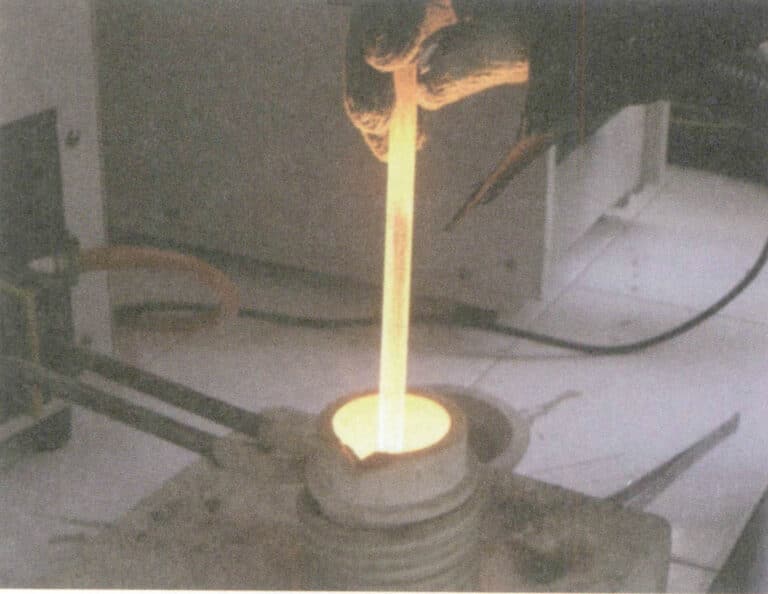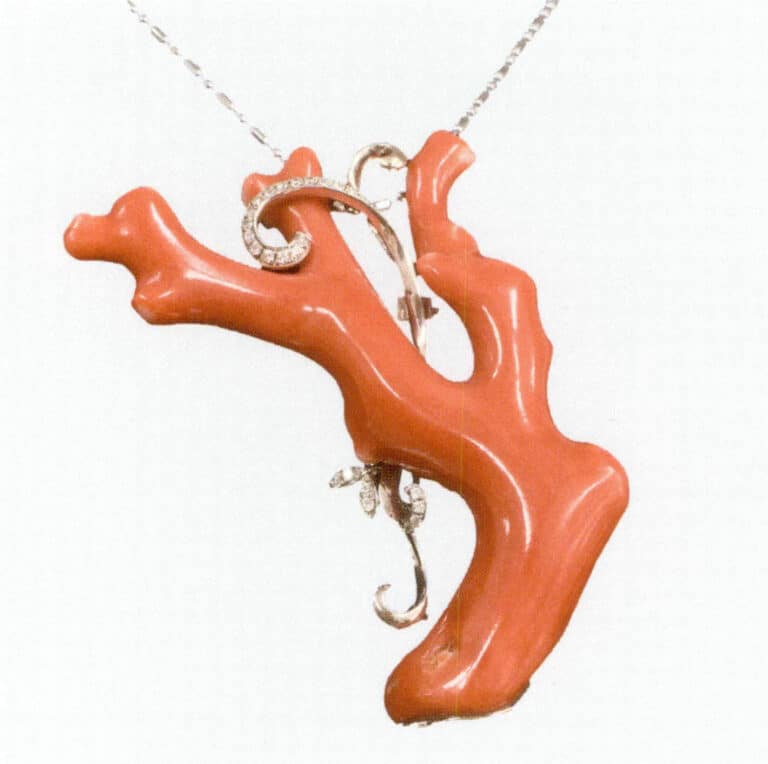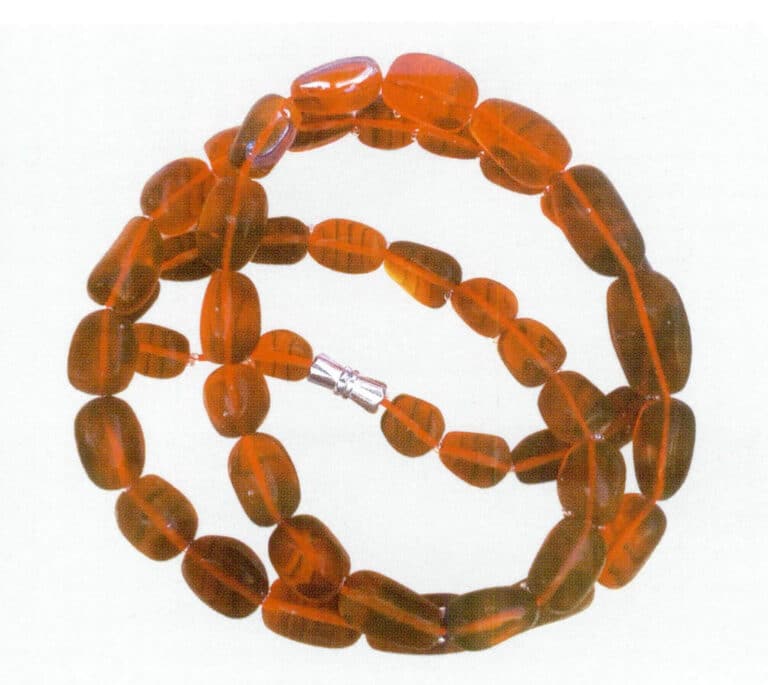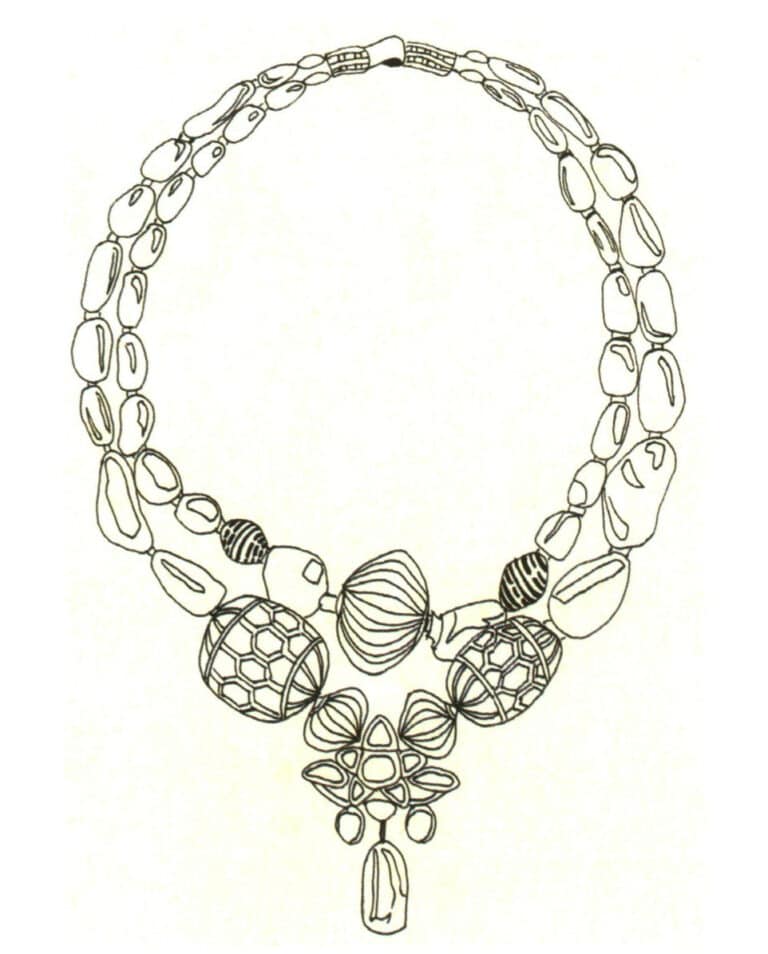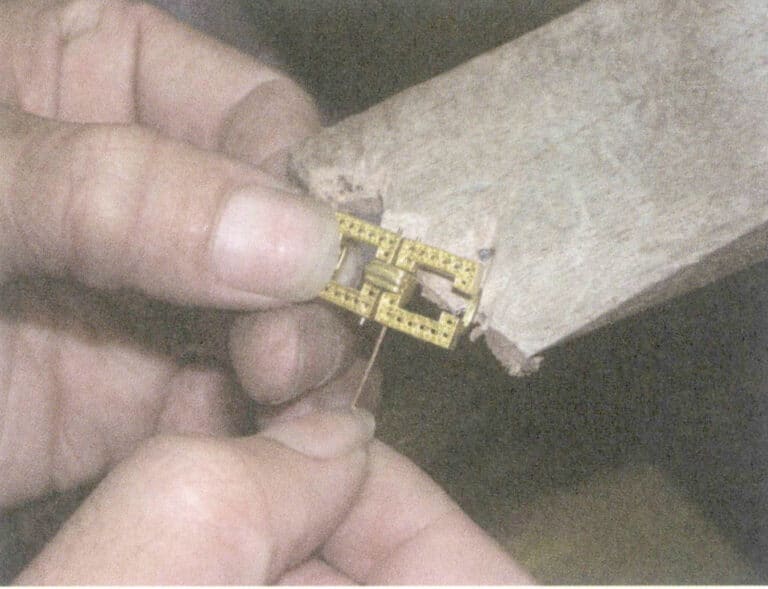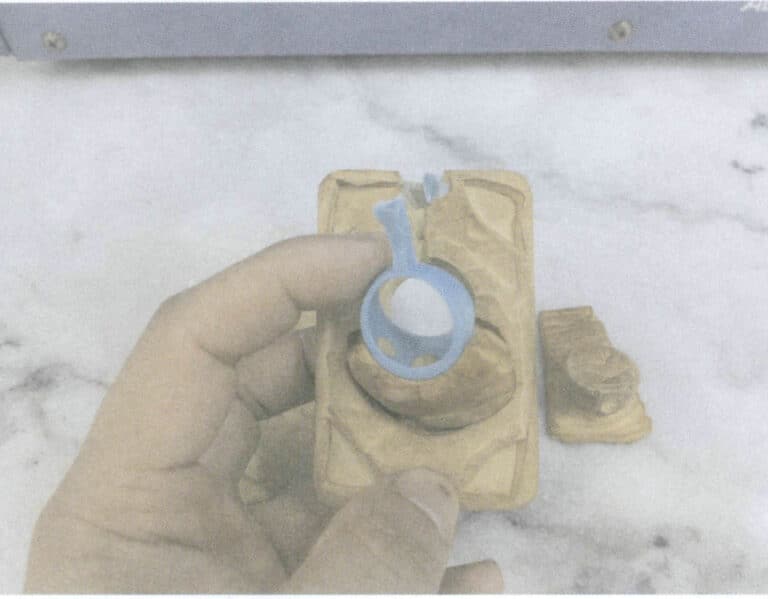How to Choose Jewelry: The Ultimate Guide to Matching Face Shape, Skin Tone & Body Type
The Science of Visual Illusions in Styling
Introducción:
This comprehensive guide delves into the art and science of jewelry coordination, focusing on two core areas: strategic pairing and correct wearing methods.
The first part masterfully applies principles of visual illusions to jewelry coordination. It provides detailed guidance on how to select and match pieces to complement an individual’s unique attributes. This includes analyzing face shapes (like oval, round, square, and heart), skin tones (categorized as light cool, light warm, deep cool, and deep warm), and body types. Furthermore, it explores how factors such as age, gender, occasion (from formal to casual), and clothing should influence jewelry choices to achieve a harmonious and flattering look.
The second part is a practical manual on the wearing methods and cultural etiquette of various jewelry types. It covers the symbolism of wearing rings on different fingers, the classification and selection of earrings for hairstyles and face shapes, the choice of necklaces and pendants for the neckline, and the types and sizing of bracelets.
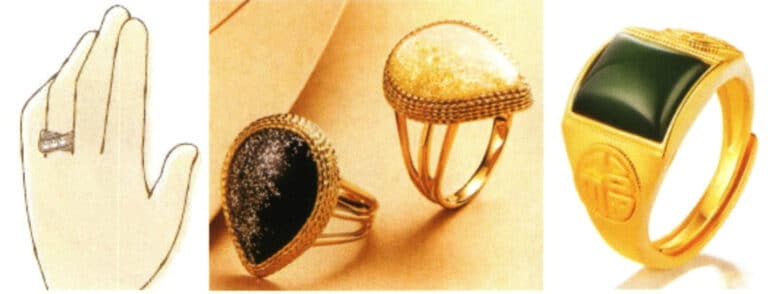
Ring set with large gemstone
Índice
Section I Visual Illusions and Jewelry Coordination
1. Understanding Visual Illusions

Image 1

Image 2
(1) Definition of Visual Illusion
Visual illusions occur when people make incorrect judgments or perceptions while observing objects, influenced by personal life experiences or psychological and physiological factors. They include common geometric illusions, subjective contour illusions, light and shadow illusions, color illusions, shape illusions, motion illusions, shadow illusions, and others. By reasonably utilizing visual illusions, our lives can become much more enjoyable. Visual illusions in daily life are mainly divided into two categories: shape illusions and color illusions.
Knowledge Link
The Ebbinghaus illusion is a size illusion involving actual size. In the most famous illusion image, two circles of the same size are placed together; a ring of larger circles surrounds one, and a ring of smaller circles surrounds the other. The circle surrounded by larger circles appears smaller than that surrounded by smaller ones. The two cherries in the image above are the same size, but they appear to be one large and one small, which is an indisputable fact.
The Müller-Lyer illusion is that A, B, C three lines are the same length, but with arrows pointing in different directions, B appears the shortest and the longest.
The Poggendorff illusion is that vertical and horizontal line segments are of equal length, but the vertical line segments appear longer than the horizontal ones.

The Müller-Lyer illusion

The Poggendorff illusion
Illusions often appear in our daily lives, bringing strong visual interest and artistic charm, enriching the styles and rhythms of the visual world. We can recreate illusions and apply them to life through aesthetic and functional applications.
Scientifically using shape and color illusions can provide visual enjoyment of beauty. Psychological studies show that jewelry with dull colors makes people feel solemn. Visual illusions can create an illusion of the wearing effect of jewelry, making oppressive jewelry appear less heavy, thereby psychologically reducing people’s tension and producing a sense of comfort.
(2) Application of Visual Illusions
When a person’s gaze moves horizontally, there is a visual sense of expansion; when the gaze moves vertically, there is a visual sense of stretching. When the gaze is dispersed to both sides, there is a visual sense of swelling; when the gaze is concentrated in the center, there is a visual sense of contraction.
Different people have different face shapes and body types. Applying the principles of optical illusions in jewelry matching can help compensate for shortcomings and modify face shapes and body types. For example, linear earrings can make a round face appear less rounded; a “V”-shaped necklace can elongate the face. People with less perfect body shapes need to increase visual height, which can be achieved by using the segmentation method in the principles of optical illusions. For example, raising the waistline to adjust the proportion between the upper and lower body creates the illusion of longer legs, making a person appear taller.
People with thicker fingers can wear rings on the middle or ring finger, while those with slender and long fingers can wear rings on the little finger, creating a sense of contraction and expansion, respectively. People with diamond-shaped faces should wear large earrings, necklaces, and headpieces to enrich the visual effect of the face shape; those with square faces should wear jewelry with curved designs to soften the sharp facial lines.

Ring on the ring finger

Ring on the little finger
2. Face Shapes and Jewelry
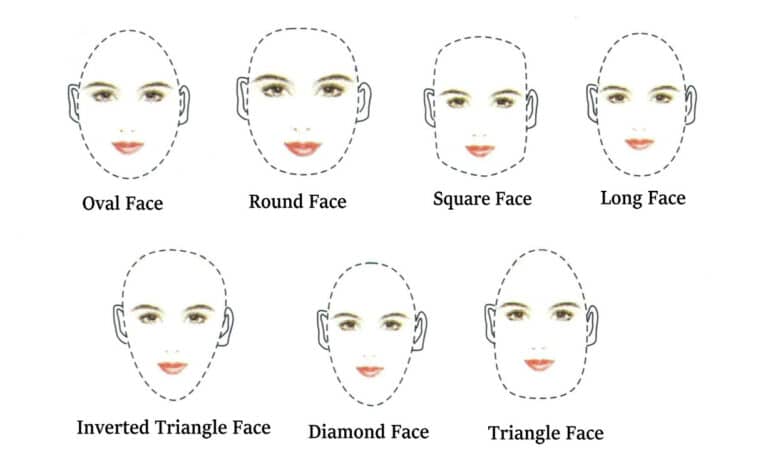
(1) Oval Face
The oval face, also known as the egg-shaped face, is characterized by smooth facial contours, evenly curved outlines, well-proportioned features, a moderately wide forehead, the widest cheekbones, and a uniformly curved chin line.
People with oval-shaped faces can almost choose any shape of earrings, and necklaces are also relatively free.
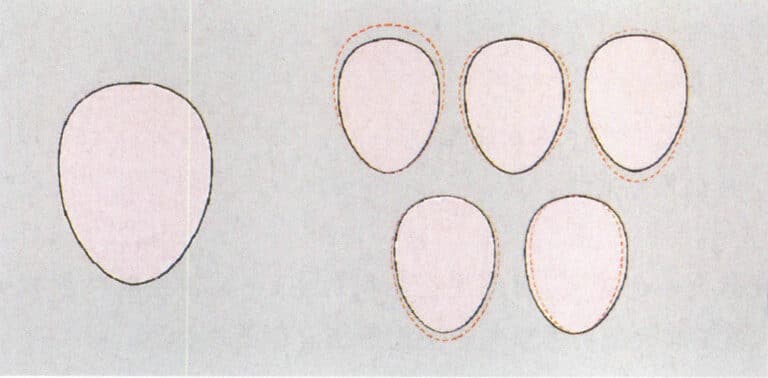
Standard oval face (left) and variation of oval face (right)
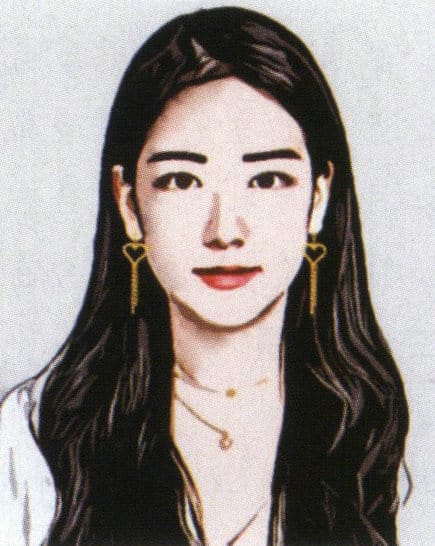
Oval-faced woman
(2) Round Face
The forehead and chin of a round face are short, the cheekbones are the widest, and the face is full, with an overall contour close to a circle. A round face is called a baby face, often giving a sense of innocence, liveliness, and cuteness. To soften the roundness of a round face, earrings and necklaces should be chosen in elongated or dangling styles, avoiding round and close-to-ear styles, as these will emphasize roundness. Downward tapering or geometric shapes can add more definition to the lines of a round face.
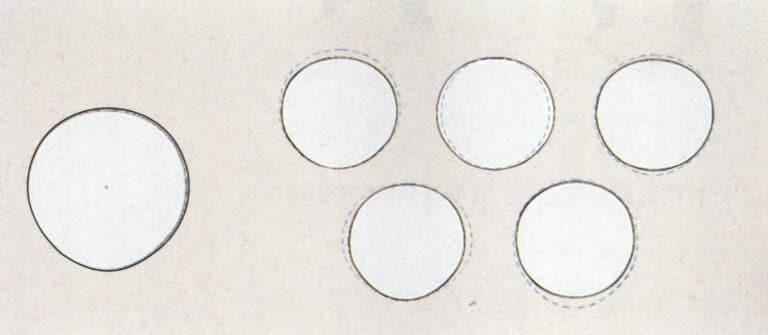
Standard round face (left) and variation of round face (right)

Round-faced woman
① Choice of Earrings
Suitable earrings: dangling earrings in a teardrop, bead chain, or linear shapes; non-dangling earrings in a long strip, diamond, diagonal line, or inverted triangle shapes.
Unsuitable earrings: round or square earrings; overly large or intricately designed earrings that make the round face appear more swollen; earrings in overly light colors.
② Choice of Necklaces
People with round faces can choose long necklaces or necklaces with pendants. When the necklace or pendant naturally hangs down, it can form a “V” shape. People with round faces should avoid wearing necklaces that are too thick or have overly complex designs.
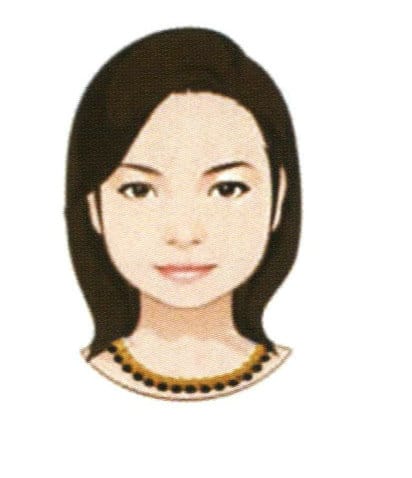
Round faces wearing curved necklaces

Round face wearing a "V"-shaped necklace
(3) Square Face
The characteristics of a square face include a prominent forehead angle and a slightly wide chin, meaning the width of the forehead, cheekbones, and jawline are roughly the same, giving an impression of a strong-willed nature. The square face has a distinct contour and a modern feel, conveying a sense of determination, but it can also come across as serious and rigid. Women with square faces should wear earrings with smooth shapes (such as teardrop or oval shapes) or opt for feminine round or streamlined earrings, which will soften and round the facial contours. Earrings with sharp angles or geometric shapes should be avoided as they emphasize the angular lines.

Standard square face (left) and variations of square face (right)
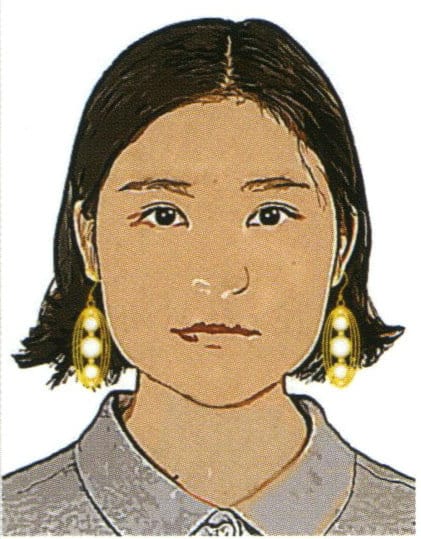
Square-faced woman
① Choice of Earrings
- Choosing earrings with smooth lines and rounded shapes such as oval, heart, floral, and spiral designs is recommended.
- Choosing irregular geometric earrings with soft lines is recommended.
② Choice of Necklaces
People with square faces are suitable for wearing pendant-style necklaces to soften the straightness of the jawline.
(4) Oblong Face
A oblong face is a slender and elongated shape that gives a rational and mature impression. The forehead, cheekbones, and jawline widths are similar, but the face width is noticeably smaller than the face length. When wearing jewelry, people with oblong faces need to achieve the visual effect of shortening the face length and increasing the face width.
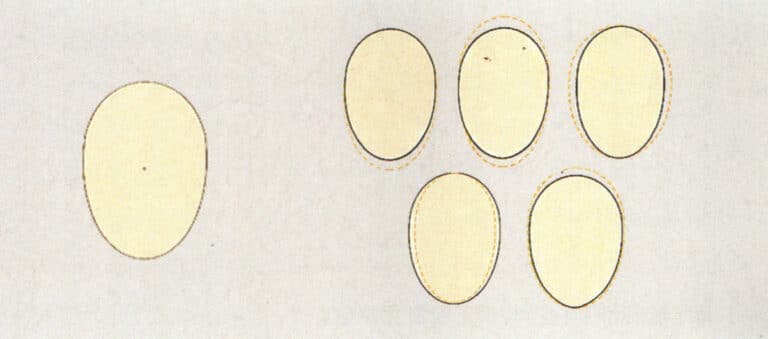
Standard oblong face (left) and variant oblong face (right)

Oblong-faced woman
① Choice of Earrings
People with long faces are suited to earrings with geometric or decorative patterns, such as round, heart-shaped, or oval designs, visually creating a horizontal expansion effect. In contrast, slender earrings give a vertical stretching impression and are unsuitable for long faces.
② Choice of Neck Accessories
Choosing chokers, short and thick necklaces, and various patterned, repetitive sets of necklaces is recommended for people with long faces. Thin and long necklaces or necklaces with slender pendants are not suitable.
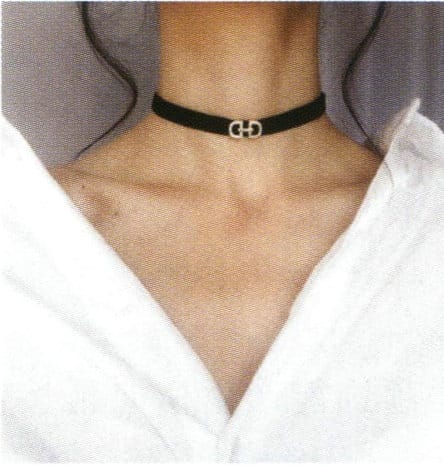
Short Choker
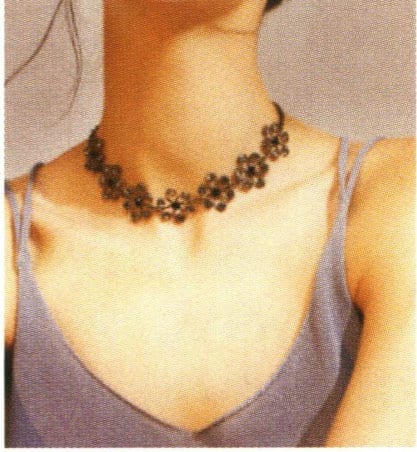
Collar
(5) Heart-Shaped Face
The heart-shaped face, also known as the oval face, is characterized by a wide and full forehead and a pointed, slender chin, giving a delicate and petite appearance. It aligns well with Eastern aesthetic preferences and is considered an attractive face shape suitable for wearing various types of jewelry. It is important to note that the pointed chin of the oval face can be accentuated by long or vertically stretched necklaces, which may have the opposite effect.
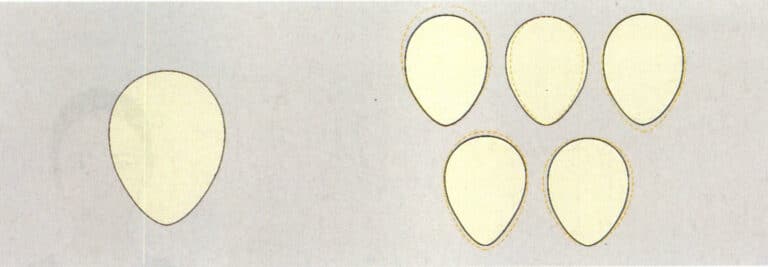
① Choice of Earrings
People with an oval face can choose earrings in geometric shapes such as oval, triangular, teardrop, bell-shaped, and fan-shaped.

Round earrings
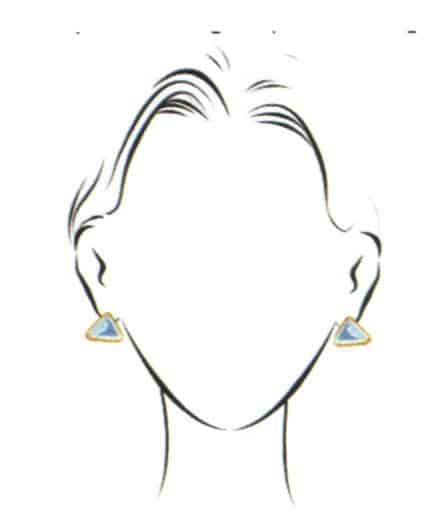
Triangular earrings
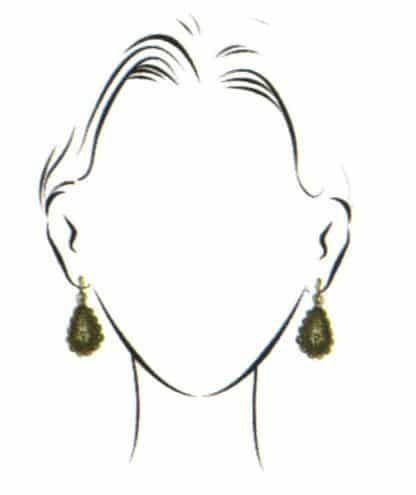
Teardrop earrings
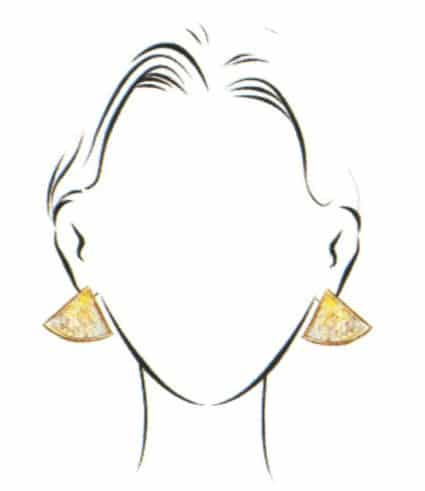
Fan-shaped Earrings
② Choice of Necklaces
People with an oval face shape are especially suited to choker-style necklaces. Wearing this type of necklace creates a horizontal elongation effect, which can soften the sharpness of the chin and make the facial contours more gentle.
(6) Diamond-Shaped Face
The overall contour of a diamond-shaped face is narrow at both ends and wide in the middle, characterized by a narrow forehead, wide cheekbones, a pointed and slim chin, and distinct angles. When choosing jewelry, people with diamond-shaped faces should select pieces with rounded or curved shapes to enhance the softness and roundness of their facial lines.
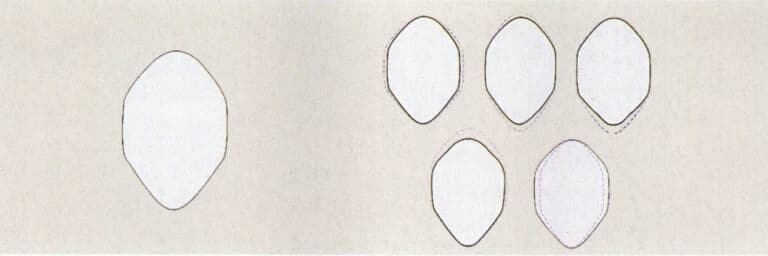
① Choice of Earrings
People with diamond-shaped faces are recommended to choose earrings in teardrop, round, oval, or bead shapes; they should avoid wearing earrings shaped like diamonds, hearts, inverted triangles, or “V” shapes, as these can make the chin appear sharper.
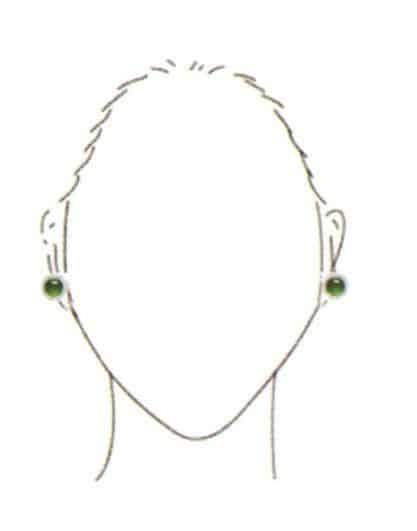
Round Stud Earrings

Teardrop Stud Earrings
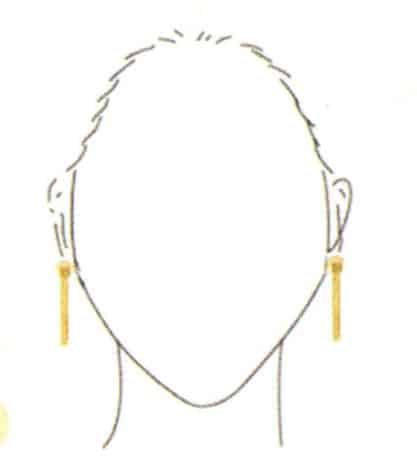
Line Stud Earrings
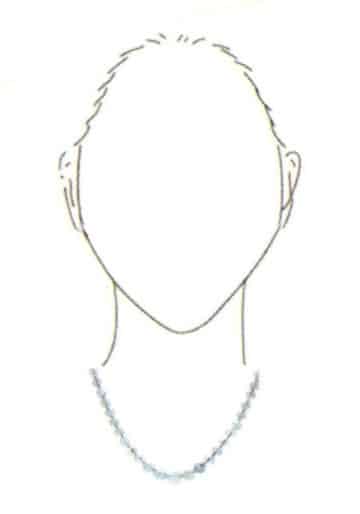
Beaded Necklace
② Choice of Necklaces
People with diamond-shaped faces are suitable for choosing necklaces made of round beads such as pearls, garnets, or necklaces with a curved effect. They also suit choker-style necklaces, but you should avoid wearing pendant-style necklaces.
(7) Equilateral Triangle Face
The equilateral triangle face also called a pear-shaped face, is characterized by a narrow upper part and a wide lower part, with a narrow forehead, a wide jawline, and distinct facial contours. When selecting jewelry, people with pear-shaped faces should try to balance the width of the jaw to make the facial outline softer.

① Choice of Earrings
People with pear-shaped faces should choose earrings with a narrower lower edge than the upper edge, such as teardrop shapes or non-sharp triangles. The length of the earrings should be carefully considered; they should not end exactly at the jawline, as this is where people’s eyes tend to focus. It is best to avoid jewelry with sharp angles, such as triangular or hexagonal-shaped earrings.
② Choice of Necklaces
People with pear-shaped faces are suitable for choosing necklaces with a vertical stretching effect, such as “V”-shaped necklaces.
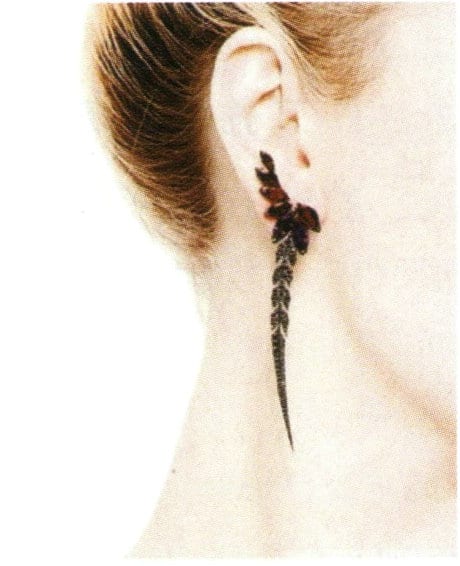
3. Skin Tone and Jewelry
(1) Skin Tone and Jewelry Selection
Skin tones vary in depth and temperature. We mainly categorize skin tones into four types: light cool, light warm, deep cool, and deep warm. Warm tones are dominated by yellow, while cool tones are dominated by blue.

Light cool

Light warm

Deep cool
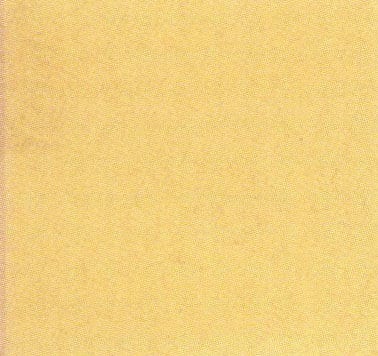
Deep warm
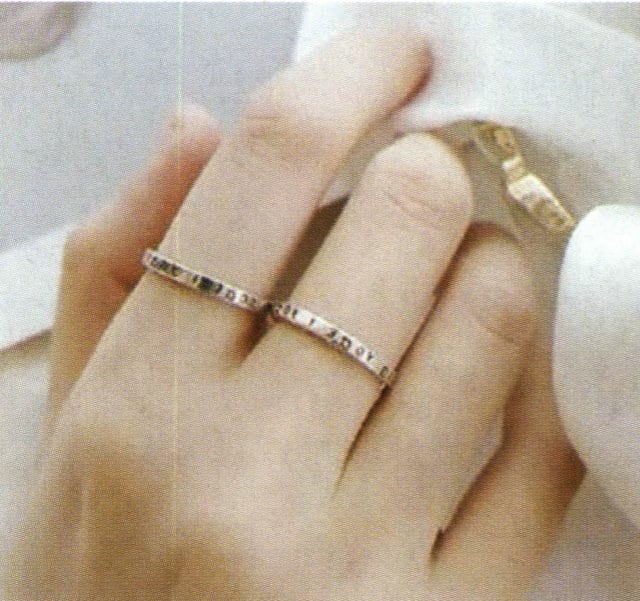
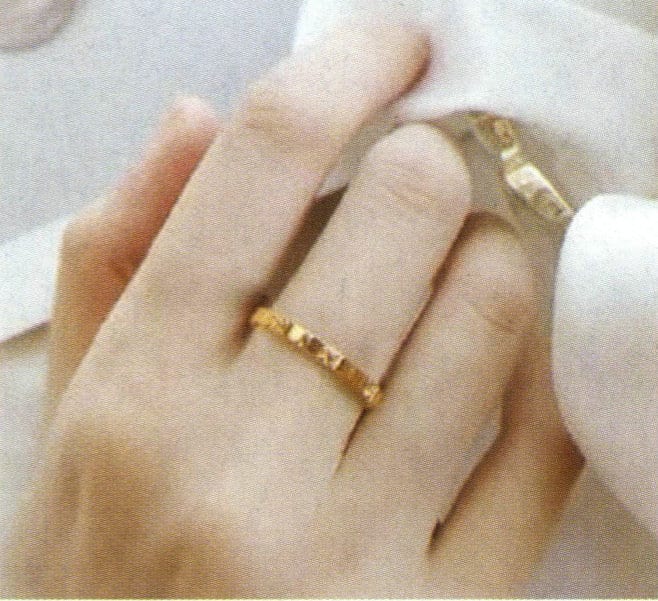
The depth and lightness of skin tone are relatively easy to distinguish. Dark skin refers to a more muted complexion, while light skin refers to a fairer complexion. Fair skin with a warm undertone is classified as light warm, dark skin with a warm undertone is dark warm, fair skin with a cool undertone is light cool, and dark skin with a cool undertone is dark cool.
People with cool light skin tones are suited to white, transparent, and highly glossy jewelry, such as silver, white gold, diamonds, and crystals.

Silver bracelet
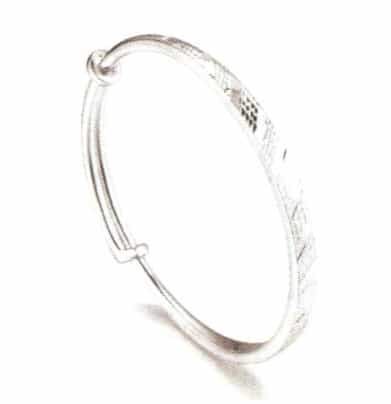
Silver bracelet

Silver ring
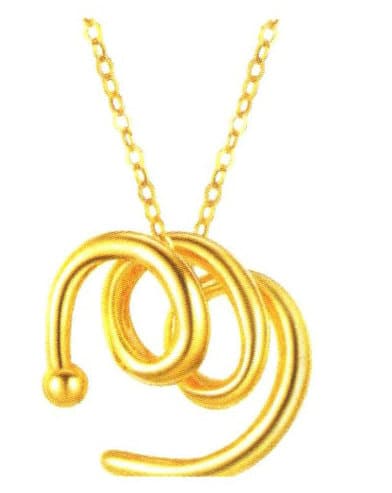
Gold pendant
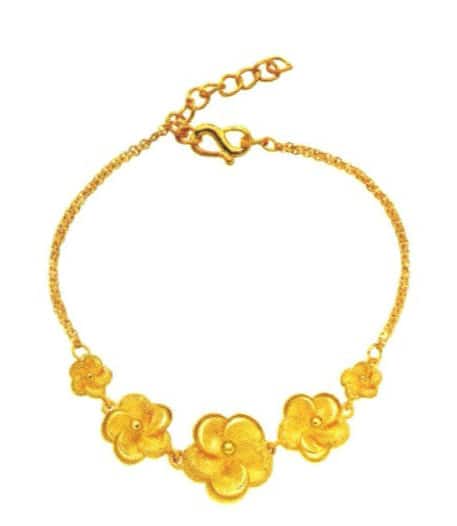
Gold bracelet

K gold bangle
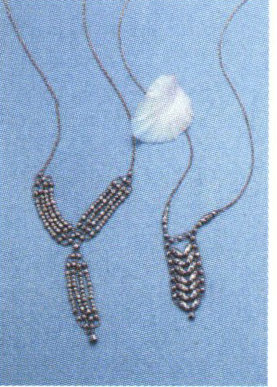
Silver pendant
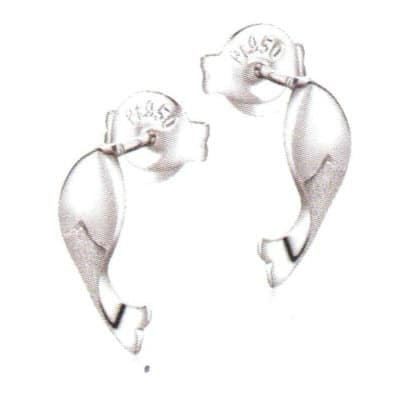
Platinum earrings
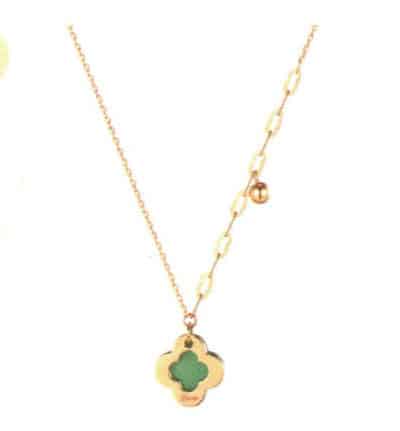
Enamel pendant
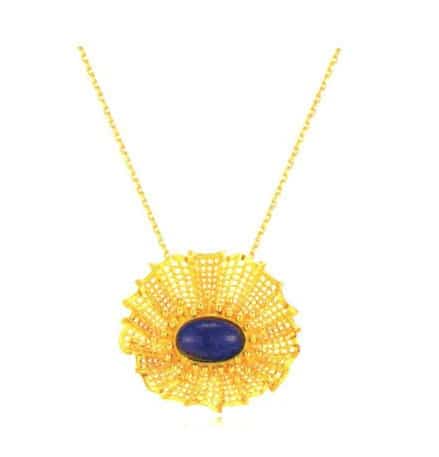
Lapis Lazuli pendant
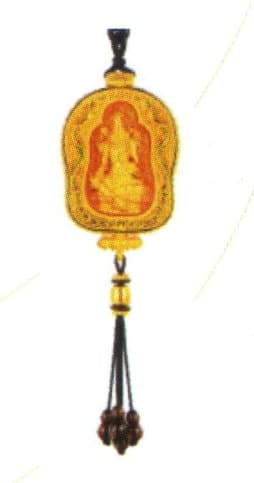
Gold pendant
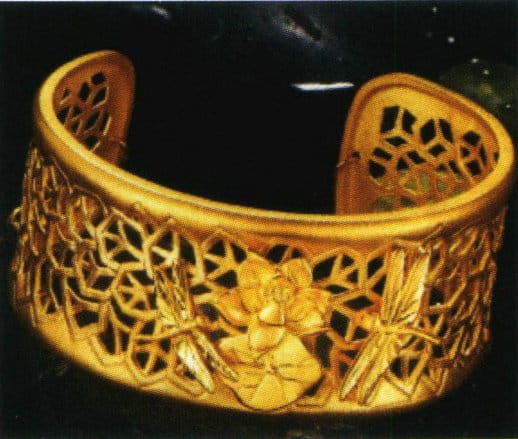
Gold bracelet

K gold pendant
(2) Matching Skin Tone with Jewelry
People with fair skin suit a variety of jewelry colors, such as softly toned K gold and platinum, as well as brightly colored, highly lustrous gemstones like rubies and amethysts, which can effectively complement the skin tone. Like rose quartz, gems with low color saturation do not highlight the skin’s radiance. Additionally, individuals with very pale and bloodless skin should be cautious, as white or transparent jewels like diamonds and crystals may make them appear even paler.

Red coral necklace
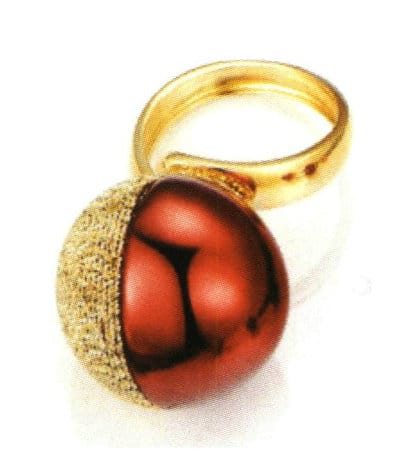
Red enamel ring

Amethyst earrings
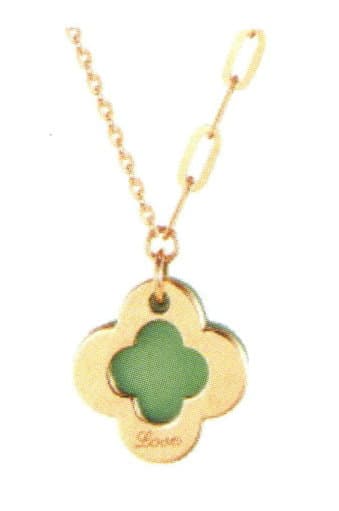
Green enamel pendant
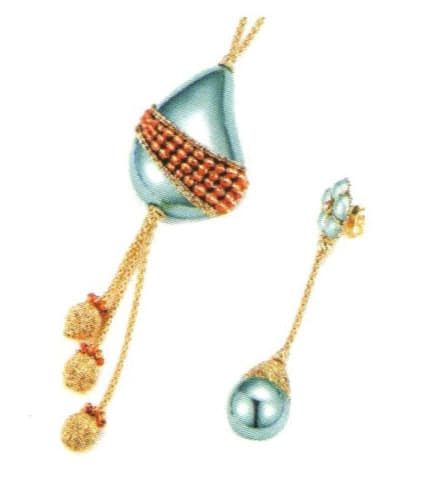
Blue enamel pendant

Blue enamel earrings

Purple enamel earrings
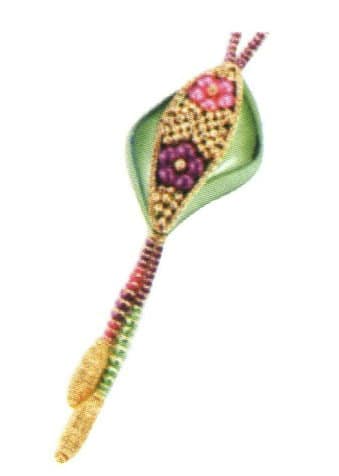
Green enamel pendant

Blue enamel pendant
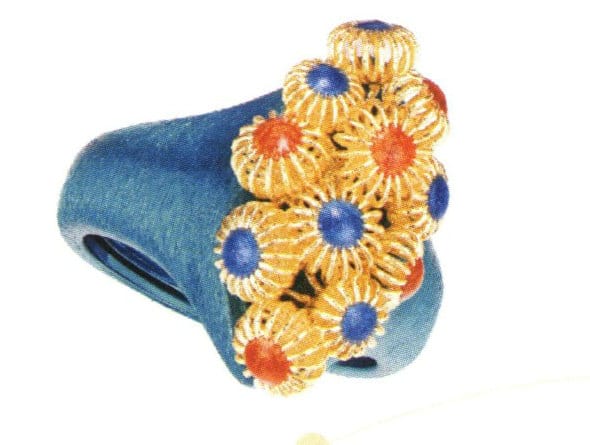
Blue enamel ring
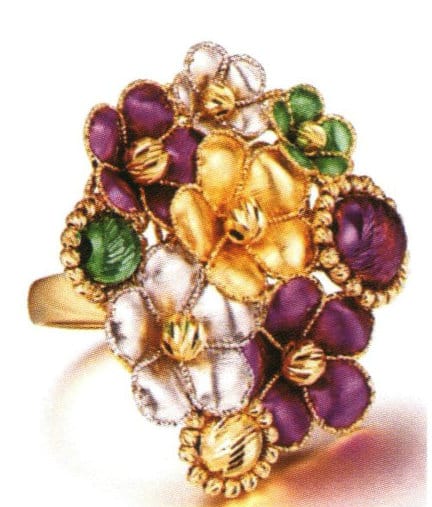
Colorful enamel ring

Crystal bracelet

Colored enamel pendant
4. Body Shape and Jewelry
(1) Women with Moderate Body Shape
Women with moderate body types have more freedom in choosing jewelry, but they should also consider their limitations, trying to highlight their strengths and avoid weaknesses. For example, women with small busts should avoid long-chain jewelry, and those with shorter necks should not choose chokers.
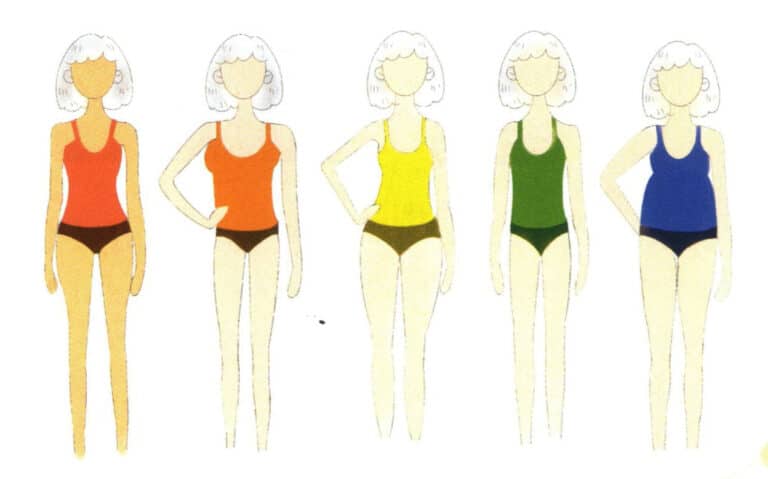
(2) Women with Slender Body Shape
The characteristics of slender women are thin bodies and long necks. When choosing jewelry, they should focus on decorating the sides, reducing decoration in the middle part to increase the width effect and reduce the sense of thinness.
To achieve visual balance, women should choose round necklaces, large earrings, glamorous rings, and thick bracelets.
(3) Women with Tall Body Shape
Tall women are mostly tall, and some are even quite robust. When wearing jewelry, they should choose thick and long necklaces, large or exaggerated pendants, rings, and earrings that are solid in shape and good quality.
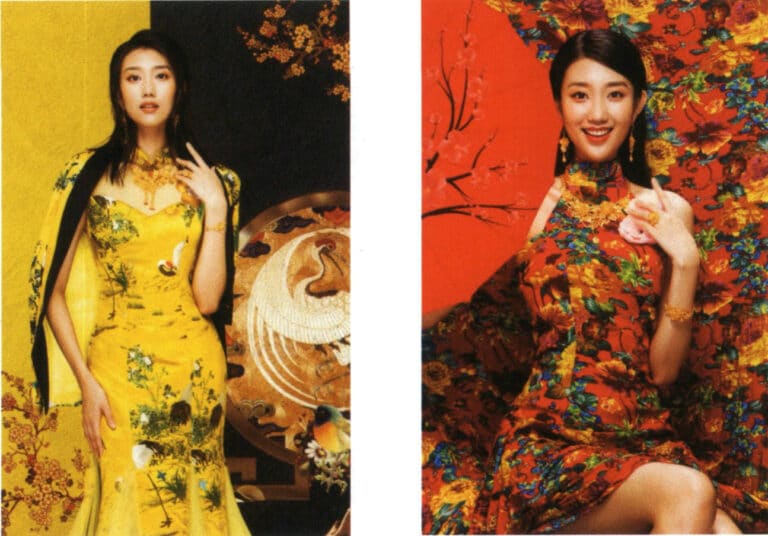
(4) Women with a Fuller Body Shape
Women with fuller figures have a plump body shape, and jewelry can be used to create a visual elongation vertically. Jewelry choices can include slender necklaces, while rings and bracelets should be as simple as possible but not too small, as that would contrast with the body shape.
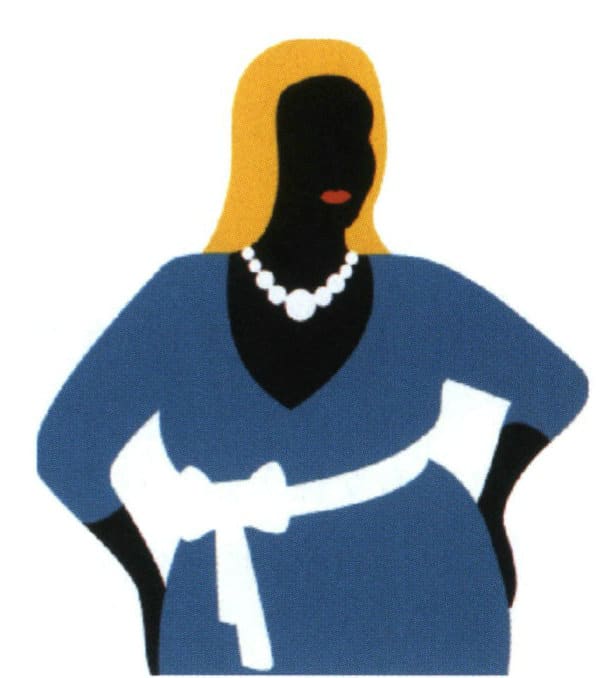
(5) Women with a Curvy Body Shape
Women with a curvy figures should simplify the sides and enrich the center when wearing jewelry. Long, slender necklaces are suitable, preferably with a stylish pendant, while bracelets and rings should be chosen in simple styles.
(6) Women with Petite Body Shape
Petite women are suited to small and delicate jewelry. Those with short necks can wear long necklaces or “V”-shaped pendants, while women with long necks can wear chokers or short necklaces. They should avoid overly large, luxurious, and exaggerated jewelry, as it creates a contrast that makes them appear even thinner.
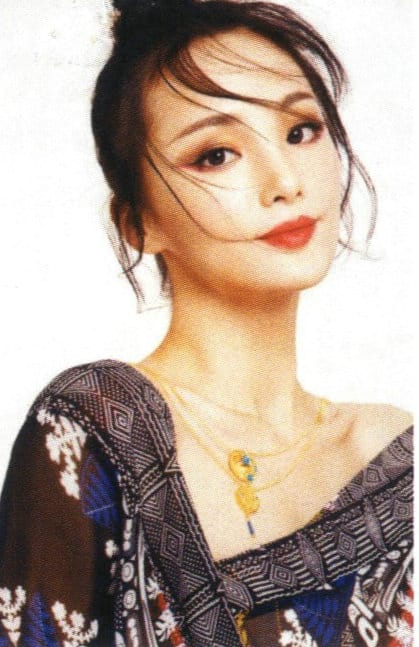
Woman wearing jewelry
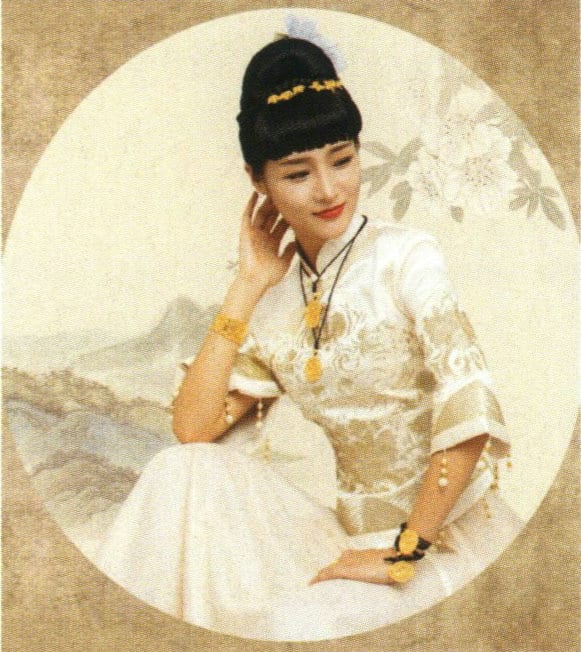
Woman wearing jewelry set
Knowledge Link
Foreign image-related professionals roughly classify women’s body shapes into five types: X, H, A, Y, and O. Statistics show that the global distribution of these five body shapes among women is 26%, 18%, 22%, 9%, 25%.
X-shaped body: wide chest and hips, narrow waist, perfect figure.
Y-shaped body: broad shoulders and narrow hips, fat distributed in the upper body, fuller arms, and chest, slim hips and legs.
A-shaped body: narrow shoulders and wide hips, slim upper body, fuller hips, abdomen, and waist.
H-shaped body: shoulders and hips are the same width; this body type is the easiest to dress, with a more harmonious body proportion.
O-shaped body: Rounded abdomen, waist width greater than shoulder and hip width.

5. Visual Style and Jewelry
5.1 The Visual Style of Jewelry
(1) Sense of Volume
Sense of volume refers to aspects such as an object’s size, length, thickness, and thinness.
① Shape, Overall Silhouette (Thickness)
Observe the shape and overall outline of the jewelry in the image below. The one on the left is larger with thicker lines, which indicates a strong sense of volume; the one on the right is smaller with thinner lines, indicating a weaker sense of volume.
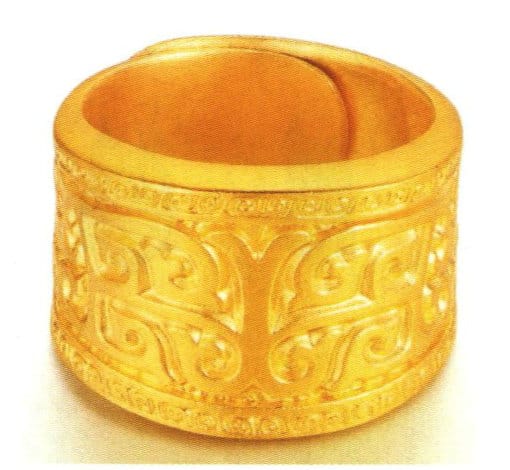
Strong sense of volume

Weaker sense of volume
② Quantity and Thickness
Observe the quantity and thickness of the following jewelry pieces. Thick and numerous pieces have a strong sense of volume, while thin and fewer pieces have a lighter sense of volume.
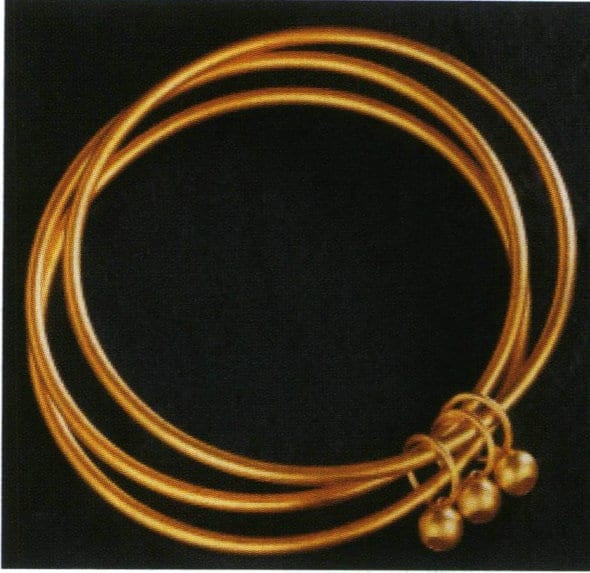
Strong sense of volume
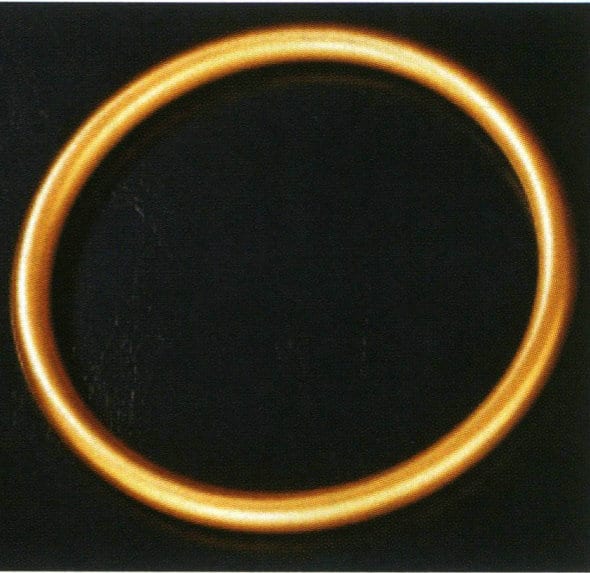
Weaker sense of volume

Strong sense of volume

Weaker sense of volume
(2) Sense of Motion and Stillness
① Complexity and simplicity, amount of decoration, complexity of inlay
The motion and stillness of jewelry refer to the strength of its decorative effect or the degree of variation. If the design is intricate, the setting complex and the gemstone facets numerous; it is considered motion; if the design is simple, the setting straightforward, and the gemstones have curved surfaces, it is considered stillness.

Motion
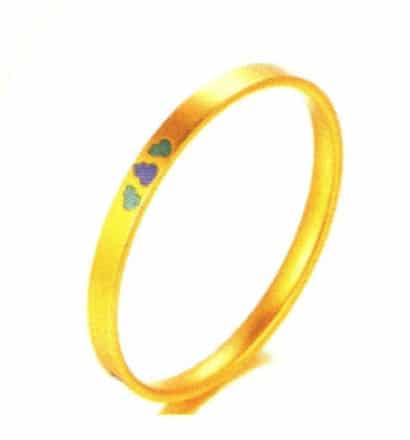
Stillness
② Saturation, contrast, glossiness
If the jewelry has high saturation, meaning the colors are vivid; strong contrast, meaning the color differences are pronounced; and high glossiness, meaning the gemstone or metal surface reflects light strongly, then this type of jewelry is dynamic; if the colors are not vivid, the contrast is weak, and the glossiness is low, then this type of jewelry is static.
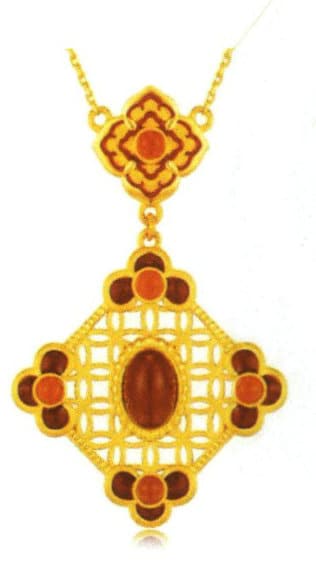
Motion
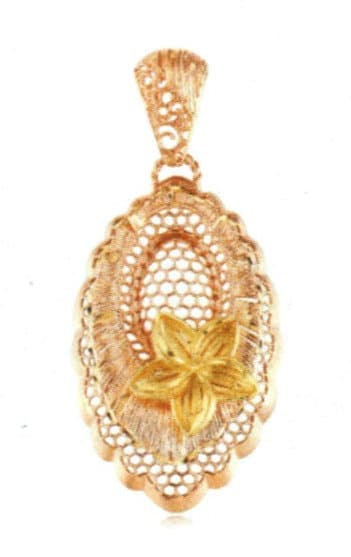
Stillness
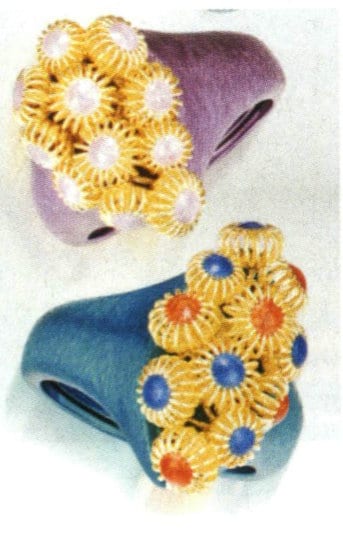
Motion
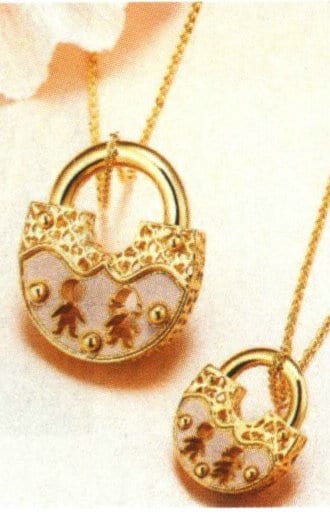
Stillness
(3) Straight and Curved
Straight-line shapes contain more straight lines and are relatively robust; curved-line shapes are more curved and soft.
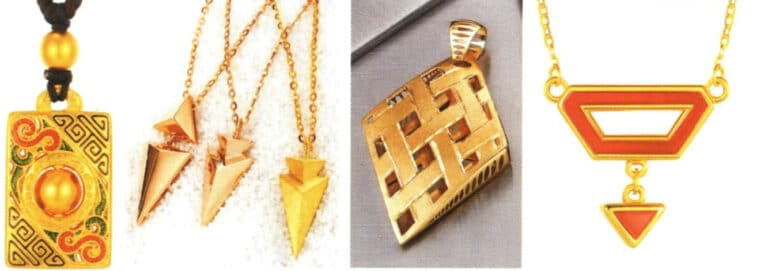
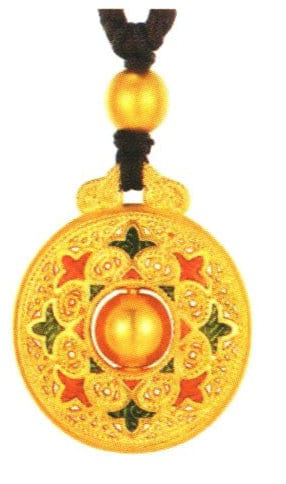
Curved-line pendant

Curved-line earrings
5.2 The Wearer's Visual Style
(1) The Size and Volume of the Face
The size of the face and the proportion of facial features affect the sense of volume: a small face with small features has a small volume; a large face with large features has a large volume.
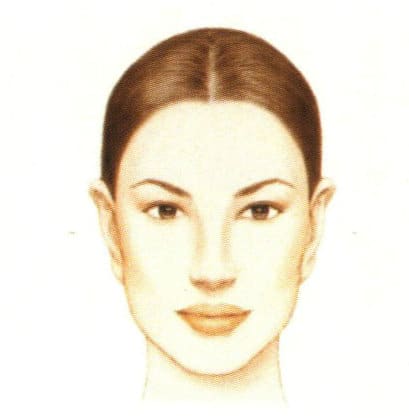
Large volume

Moderate volume
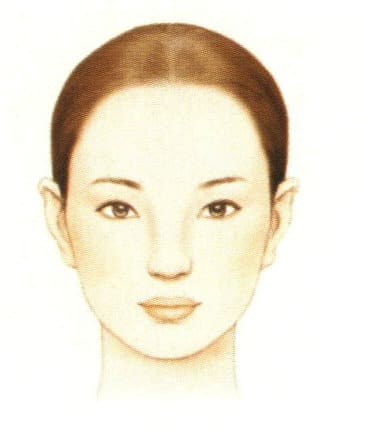
Small volume
(2) Motion and Stillness of the Face
The motion and stillness of the face depend on the strength and clarity of the facial bone structure. Bone structure refers to the prominence of features like brow and cheekbones. Clarity refers to the degree of variation in the facial features. A static face has weak bone structure, low contrast, and low clarity, resulting in a soft, gentle overall appearance that feels approachable; a dynamic face has strong bone structure, high contrast, and high clarity, making it three-dimensional and striking.

Dynamic Face

Static Face
(3) Curved and Straight Facial Lines
- Straight line type: Facial lines have a strong straight-line sense, giving a neutral and heroic impression.
- Curved line type: Facial lines show curves or roundness, giving a gentle and feminine feeling.
- Intermediate type: The facial contour is between straight and curved lines, giving an impression that is neither particularly feminine nor very heroic, leaning towards an ordinary type.



5.3 Visual Style and Jewelry Selection

Group 1 Weak stillness
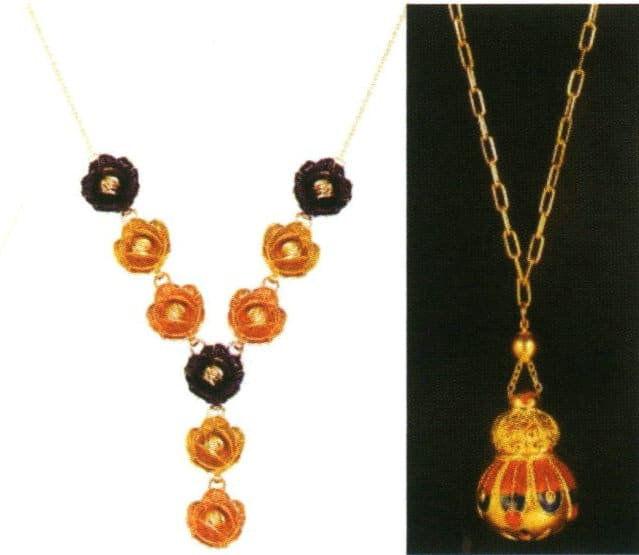
Group 2 Weak motion

Group 3 Strong stillness
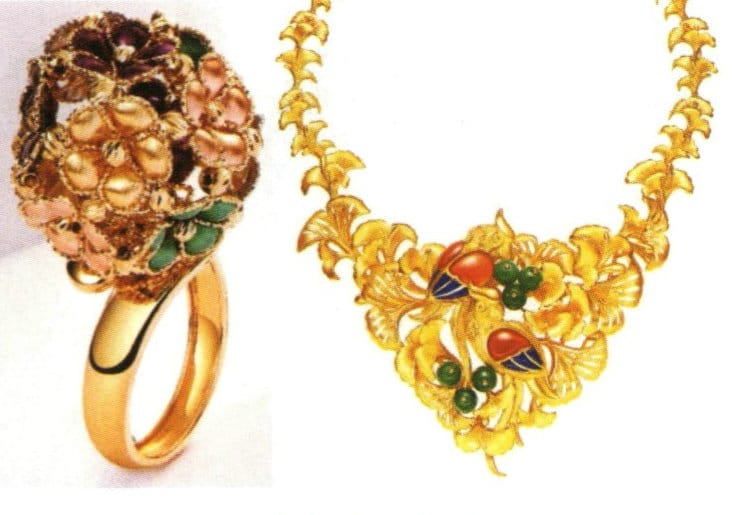
Group 4 Strong motion
Copywrite @ Sobling.Jewelry - Fabricante de joyería personalizada, fábrica de joyería OEM y ODM
6. Aesthetics and Jewelry
(1) Era
People’s aesthetic appreciation of jewelry has characteristics tied to their era; aesthetic preferences differ across time. The phoenix crowns of the Ming Dynasty and the Qing Dynasty each have unique features, with significant differences in craftsmanship, materials, and design, closely related to the historical context and other factors.
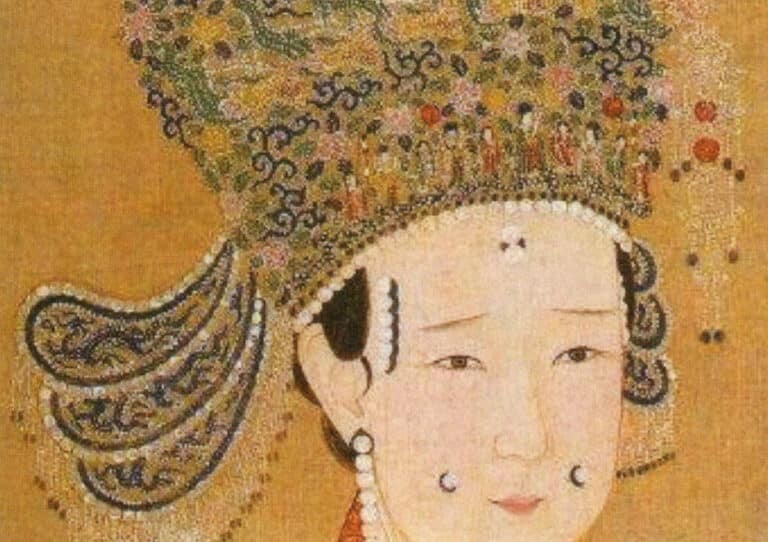
Ming Dynasty Empress Phoenix Crown

Qing Dynasty Empress Phoenix Crown
(2) Personal Aesthetics
Personal aesthetics vary due to differences in preferences, age, gender, occupation, cultural background, and economic status. These factors also significantly impact an individual’s choice of jewelry.
(3) Integration of Art and Culture
Artistic elements are transmitted across different regions, ethnic groups, and countries. Designers draw inspiration from these elements, allowing them to blend and influence each other. The fusion of Eastern and Western cultures is also one of the factors affecting people’s aesthetic appreciation.
Knowledge Link
In 1957, an ancient tomb was excavated at Yuxiang Gate in Xi’an, Shaanxi. The tomb’s owner was Li Jingxun, the granddaughter of Empress Yang Lihua of the Kaiyuan era. Many precious cultural relics were found in the tomb, each extremely valuable. Among them was a finely crafted gold necklace inlaid with pearls and gemstones, now housed in the National Museum. The necklace consists of 28 gold spherical beads, 14 on each side, inlaid with pearls, chicken blood stone, lapis lazuli, and other materials. The overall design exudes exotic charm, especially the intaglio carving of a large-horned deer pattern on the lapis lazuli. The large-horned deer is mainly distributed in Europe, the Eurasian junction, and northwest Russia. The intaglio technique was also popular in the ancient Mesopotamian region and Iran, while the main source of lapis lazuli at that time was Afghanistan. This necklace demonstrates the close cultural exchanges between East and West during the Sui and Tang dynasties.
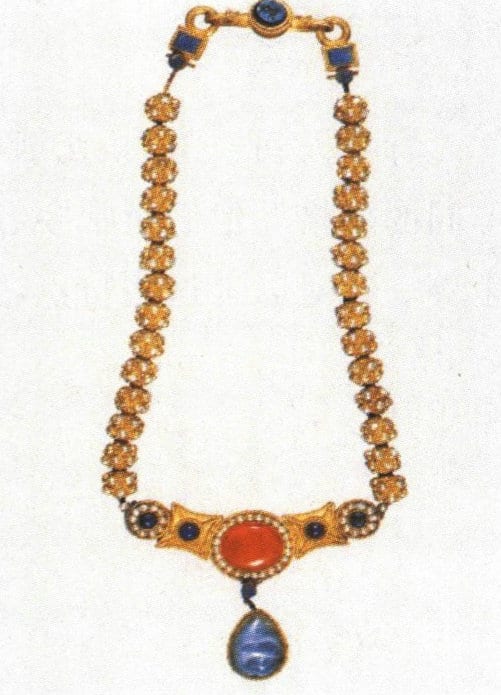
7. Age Stages and Jewelry
(1) Children
Children’s jewelry is quite particular; it should be meaningful while avoiding skin scratches. Recommended pieces include gold and silver bells, longevity locks, bracelets, jade peace pendants, and the twelve zodiac signs. These designs are smooth and unlikely to scratch the skin, symbolizing good fortune and health.
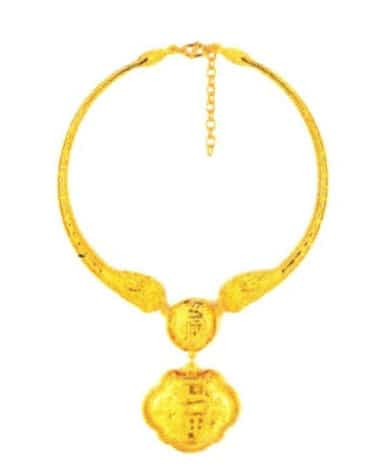
Longevity lock necklace

Longevity lock pendant

Frog pendant
(2) Young People
Young people are full of vitality and energy and tend to prefer novel, fashionable, and trendy designs. They are more willing to try various styles. They usually go through important life events, such as falling in love and getting married, establishing their careers, and the birth of a new life. Choosing intricately designed rubies, sapphires, diamonds, and various semi-precious stones is recommended based on these characteristics.
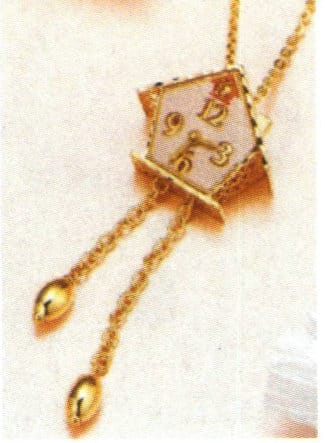
Clock pendant

Fan-shaped pendant
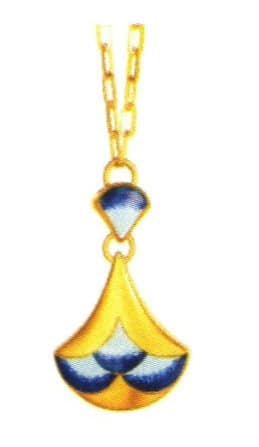
Enamel Pendant

Enamel ear thread
(3) Middle-Aged People
Middle-aged people have a certain amount of life experience, and their temperament becomes more composed with time. For them, jewelry is not just an accessory but also a representation of their taste and financial strength. Therefore, they should choose high-end, elegant, quality pieces such as jadeite, Hetian jade, rubies, and sapphires.
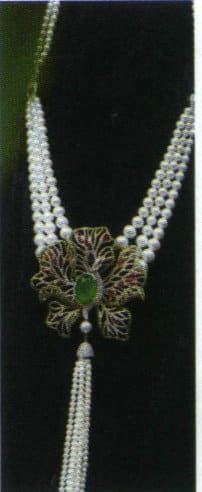
Pearl and jadeite necklace
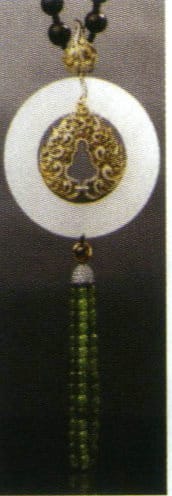
Hetian jade pendant
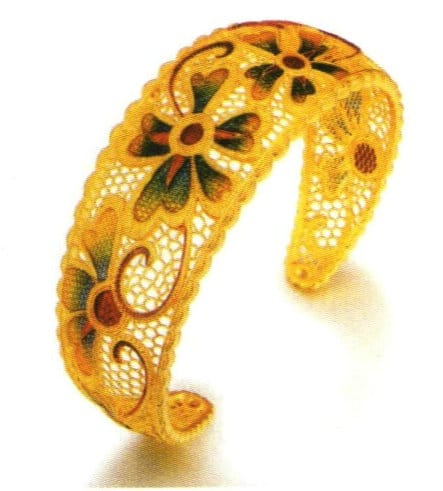
Filigree enamel bracelet
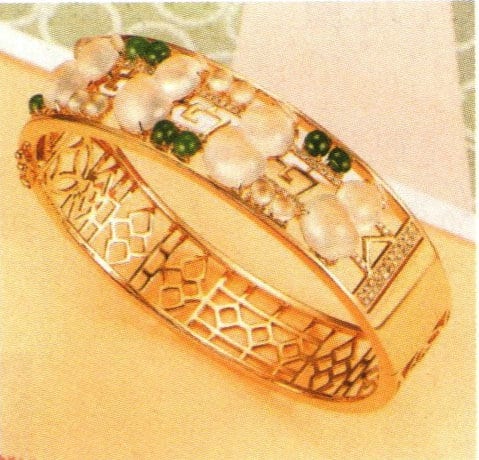
Jade bangle
(4) Elderly People
Most elderly people are retired, have more free time, a gradually peaceful mindset, and more energy to care for their families and nurture their bodies and minds. They are suitable for wearing simple and plain styles, such as exquisitely crafted gold and silver jewelry and gemstone jewelry with dignified colors.
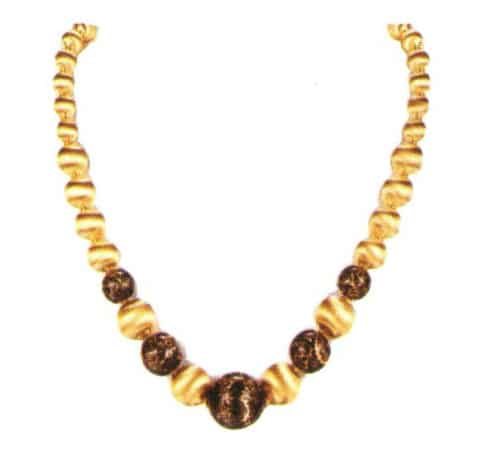
Multicolor gold necklace
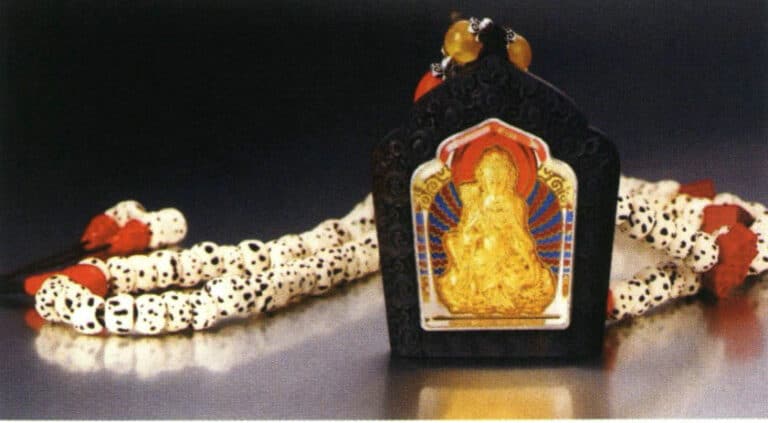
Golden Bodhi Guanyin
8. Gender and Jewelry
In recent years, it has become increasingly popular and widespread for men to wear jewelry, with the number of men wearing jewelry growing and the demand for jewelry rising.
In traditional Chinese views, jewelry is a symbol of wealth. Therefore, when Chinese men choose jewelry, high-value and value-retaining materials such as gold, platinum, and diamonds are their first choice.
Formulario: Men’s jewelry tends to be more concise and simple, showcasing masculine vigor; women’s jewelry emphasizes lightness, slenderness, delicacy, and a sense of softness in form.
Función: Men’s jewelry emphasizes practicality, while the primary purpose of women’s jewelry is decorative.
Trend: Men’s jewelry generally does not follow specific fashion trends; women’s jewelry features innovative and unique designs with diverse shapes, mostly following trends.

Bicolor gold bracelet

Multicolor gold cufflinks
Consumer psychology: Men choose jewelry mainly to display status and do not pay much attention to the price; women treat jewelry as fashion items, change them frequently, and have certain considerations about the price.
In modern society, with the continuous change in men’s aesthetic concepts, the phenomenon of men wearing jewelry will become increasingly common, and the market potential for men’s jewelry is immeasurable.
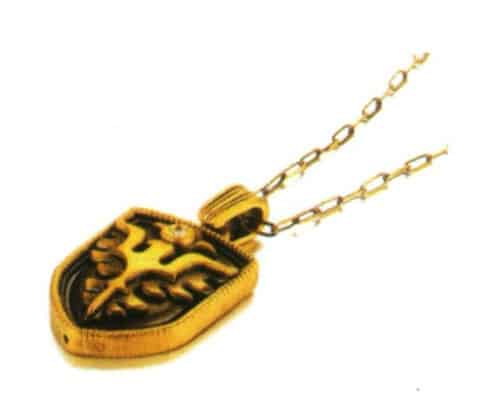
Colored gold pendant
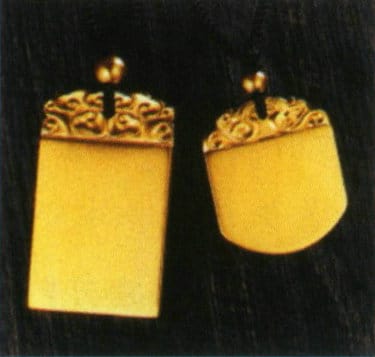
K gold pendant
9. Occasions and Jewelry
(1) Formal Occasions
When attending formal occasions, it is recommended to choose high-quality jewelry. In addition to adhering to traditional rules, the jewelry worn should suit one’s status and temperament and not be overly conspicuous.
If attending a formal event or an important work meeting, choosing simple, elegant jewelry with a strong shine is recommended. If attending dinners, parties, or gatherings with a work-related or business nature, avoid wearing jewelry that is too exaggerated or flashy or too many pieces, as this can appear overly eye-catching or aggressive and inappropriate.

(2) Social Occasions
Social occasions refer to gatherings among friends, colleagues, family members, etc., including wedding banquets, balls, parties, and small salons. These occasions are great opportunities to showcase oneself. Dressing can be fashionable and personalized, with various fashion clothes and evening gowns being appropriate. It is recommended to choose high-end, exquisite jewelry whenever possible. For luxurious and lively occasions, you can opt for elaborately designed ruby, sapphire, diamond, emerald, pearl, and other jewelry; matching sets are even better.
(3) Work Occasions
Work occasions are relatively formal, emphasizing solemnity and conservatism. To demonstrate team spirit, clothing and accessories should be neat, consistent, and not too conspicuous.
① Interview
Wearing overly exaggerated jewelry during interviews, such as swinging earrings, jangling bracelets, or artificial gemstones, is not advisable. Swinging jewelry in front of the interviewer gives an impression of immaturity, and the interview outcome can be easily imagined; on the contrary, wearing a bit of simple, elegant, and refreshing small accessories may yield unexpected positive results.
② Meetings or Gatherings
If attending important work meetings or grand opening ceremonies, choosing jewelry that matches your identity and temperament is of high value and is simple. When attending work-related parties or gatherings, avoid wearing jewelry that is too exaggerated in style or brightly colored, and do not wear too much jewelry to prevent overshadowing the occasion or causing unnecessary misunderstandings.
③ Work Office Settings
In the workplace, jewelry should be simple and neat; avoid choosing too flashy, and the colors and styles should not be too extravagant.
For professions with special work environments, such as civil servants and teachers, those engaged in these occupations have more or less influence on the public. The jewelry they wear should be elegant and simple, avoiding anything strange, complicated, overly personalized, or exaggerated, as this can give an impression of unreliability and greatly affect the image of their employer.
People working in metallurgy, chemical, and electromechanical industries, especially those working in environments with strong acids, strong alkalis, high temperatures, or pollution, should avoid wearing pearls, coral, opals, and other jewelry that is easily corroded by heat and chemicals or prone to slipping off.
(4) Casual Occasions
People feel more relaxed at entertainment venues, so bold jewelry designs can be chosen. Brooches do not have to be pinned on the chest; they can be placed on the collar or hat brim to create a carefree atmosphere. It is recommended to wear fresh, bright, vivid, lively, and casually styled fashion jewelry, such as agate, amber, crystal, jade, gold, and silver pieces.
10. Clothing and Jewelry
Jewelry and clothing together form part of one’s overall image in daily life. To enhance the effect of jewelry coordination and create a unique artistic style of jewelry matching, we need to consider many influencing factors such as color, shape, and material. When dressing, jewelry is often used alongside accessories like belts and scarves; sometimes, it serves as a highlight or accent, and other times, it compensates for shortcomings in the outfit.
(1) The color harmony between jewelry and clothing affects the outfit’s overall visual effect and enriches the look’s layering. Wearing brightly colored jewelry with plain clothes can create contrasts in brightness and purity, giving solid-colored clothing a sense of vibrancy and making the overall image more lively; conversely, pairing simple jewelry with flashy clothes can achieve balance. Among many jewelry materials, gold, silver, pearls, and diamonds are versatile and can match almost all clothing. However, brightly colored jewelry such as jadeite, rubies, sapphires, and emeralds require careful selection to coordinate with different clothing colors.
(2) Dark-colored clothing can be paired with brightly colored, glossy, and exaggeratedly shaped jewelry, making the jewelry the focal point—for example, a black evening dress with green jadeite, a luxurious diamond necklace, ruby, or pearl set; light-colored clothes should preferably be matched with jewelry in lighter tones, such as icy jadeite, K gold, aquamarine, etc., for subtle accents and enhancement. Choosing bright rubies or sapphires with light-colored clothes may appear somewhat abrupt.
(3) The jewelry style should be simpler to avoid visual conflict if the clothing has many decorative details, such as lace, frills, or floral patterns. When wearing two or more jewelry pieces, their colors and materials should be coordinated and not disparate. If the jewelry is set with colored gemstones, the main color tone of the jewelry should be consistent with the overall tone of the clothing. Both the surface area and volume are relatively small, requiring us to skillfully coordinate based on the overall color style to enhance the expressiveness and appeal of the clothing.
(4) Pure cotton clothes give a simple, natural feeling and are mostly made into casual or ethnic-style garments. When matching jewelry with this type of clothing, casual and playful styles such as silver, shells, and ceramics are suitable, while luxurious materials and styles are not appropriate. High-end clothing such as fur and formal wear often require equally glamorous and exaggerated jewelry (such as colored gemstones, gold, and pearl sets) to create a bright and dazzling effect.
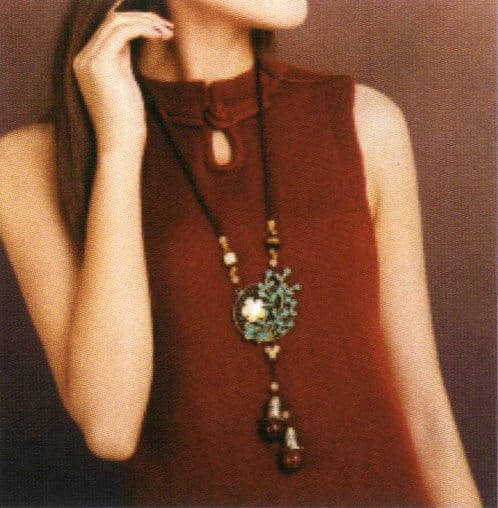
Turquoise pendant paired with ethnic-style clothing

Bodhi seed pendant paired with casual clothing
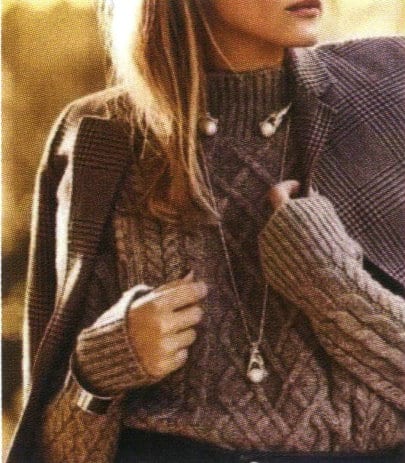
Pearls paired with dark-colored clothing

Diamond jewelry paired with white evening gowns
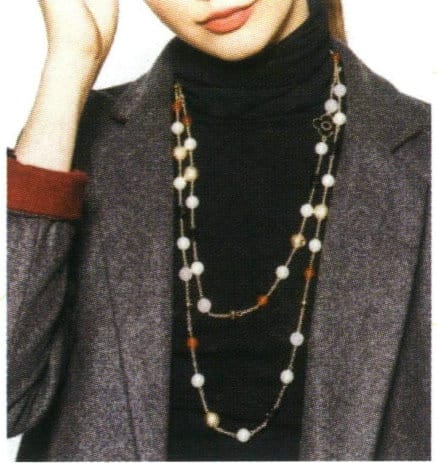
A plastic bead necklace is paired with a black sweater.
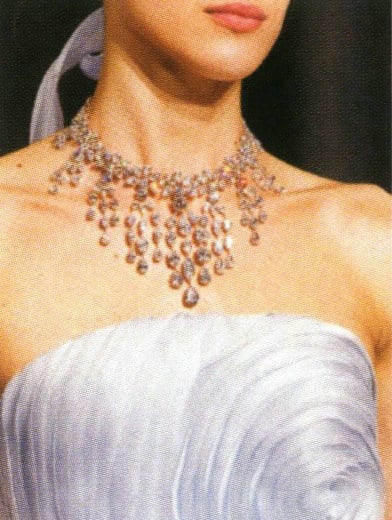
Diamond jewelry paired with white evening gowns

Sapphire jewelry paired with black evening gowns
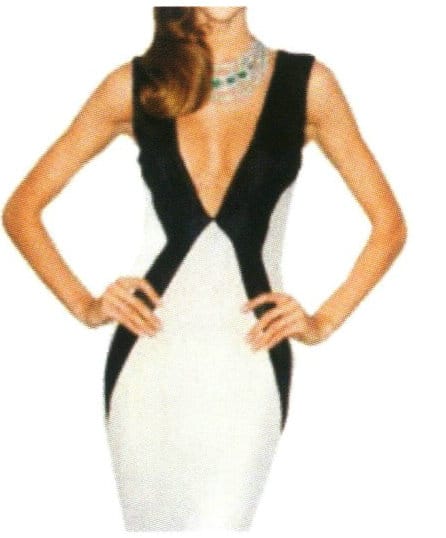
Emerald jewelry paired with a white dress
(5) Jewelry generally serves as an accessory to clothing to enhance the wearer’s temperament. When matching with clothing, the number of pieces worn should not be too many, as it can easily have the opposite effect, even overshadowing the main outfit or being superfluous. For example, a plain outfit adorned with a necklace and a ring is sufficient. Adding a brooch, bracelet, or waist chain, especially if the materials differ and the luster varies greatly, makes it look uncoordinated and tacky.
Section II Different Ways to Wear Jewelry
This module mainly introduces the wearing methods and cultural customs of necklaces, earrings, bracelets, rings, and brooches, mastering the etiquette and requirements for modern jewelry wearing, and making reasonable combinations.
Common necklaces, earrings, bracelets, rings, and brooches must all follow certain rules and customs when worn, enhancing personal image while showcasing taste.
1. Rings
(1) Engagement Rings and Wedding Rings
Engagement rings are given by the man to the woman to signify the intention to marry; both partners wear wedding rings to confirm the marital relationship. With the progress and development of the times, wedding rings have been continuously adorned with various gemstones and fashion elements, such as pearls, gemstones, diamonds, and so on. Engagement rings usually feature a prominent diamond or gemstone as the main stone to show the seriousness and sincerity of the proposal; wedding rings are meant for daily wear and are more commonly plain bands, though sometimes small diamonds are added to the band to indicate fashion and uniqueness.
(2) Symbolism of Wearing
In Western traditional culture, God bestowed luck upon the left hand, and Western medicine believes that the ring finger is connected to the heart. Therefore, wearing a wedding ring on the left finger symbolizes faith and sanctity in marriage, a custom passed down to this day.
The internationally popular ways of wearing rings are as follows.
- Index finger — unmarried, wanting to marry. People who like to wear rings on their index fingers often stand out and have strong personalities. Since the index finger is naturally prominent, the ring worn does not necessarily need to be set with gemstones. You can choose rings with exaggerated and grand designs visible from different angles, such as marquise, pear, or oval-shaped fancy rings.
- Middle finger — in a relationship. The middle finger is the longest and most artistically elegant finger. It is ideal for wearing uniquely designed, finely crafted, understated yet not exaggerated plain gold rings, which can showcase a gentle and refined lady-like demeanor.
- Ring finger — already engaged or married. The ring finger is the most beautiful and feminine. The romantic ancient Greeks believed that the ring on the left ring finger connects directly to the heart through the “vein of love,” linking two hearts together. It is recommended to choose rings that are finely crafted and elegantly designed.
- Little finger — single aristocrat (in some regions represents homosexuality). Some believe the little finger symbolizes opportunity and luck; wearing a ring on the little finger can ward off evil and bring safety. Since the little finger is on the outermost side, rings worn here generally do not have gemstones. The ring style can be playful, fashionable, exaggerated, or alternative, with straight or curved designs.
- Thumb — highlights personality. The thumb generally does not wear rings; if it does, it is to show a strong, rebellious personality. In Western aesthetics, wearing a ring on the thumb is very unusual, not only considered unattractive but also affecting hand movement, so Westerners rarely wear rings on the thumb. The thumb is relatively thick, so both thin and thick bands can be worn.
According to our customs, the meaning of wearing rings on different fingers varies. Right little finger: not in a relationship; right ring finger: in a passionate romance; right middle finger: taken; right index finger: single, waiting for love; left pinky finger, single by choice; left ring finger, married; left middle finger, engaged; left index finger, unmarried. Wearing rings on both the left and right thumbs represents power and can also signify confidence.

(3) Common Ring Materials
Colored gold can come in white, yellow, rose red, and other colors, with 18K gold being the most common. Colored gold jewelry is relatively lightweight, slightly less expensive, exquisitely crafted, and features novel designs. Its sales volume in China has steadily increased, making it very popular among consumers. Rose gold often contains iron, which makes it prone to oxidation and discoloration.
Wedding rings are also often made of platinum. Platinum rings are more wear-resistant, have a hard texture, low allergenicity, and do not easily fade.
(4) Rings and Hand Shapes
Various finger shapes include delicate, slender, small, and thick. Rings are crucial in personal image styling and must complement the finger shape to create an aesthetic effect. Determining the style of the ring, the size, and the number of gemstones based on the finger shape can achieve a satisfactory result.
Delicate (Uniform) type: This finger shape is perfect and can be paired with any style of gemstone ring, whether a large diamond ring or a slender, elegant, delicate ring style.
Slender type: The characteristic of this finger shape is long and thin fingers. It is not suitable to wear large, angular rings. Instead, cluster settings or channel settings are appropriate, so choose square, cushion, or round center stones paired with small accent diamonds and use thin bands or bands of average thickness. This can visually create a sense of expansion and reduce the slenderness of the fingers.


Small type: Characterized by short palms and slender fingers. It is unsuitable for wearing rings with a single large gemstone or thick, heavy bands. Suitable for rings or bands set with a single small diamond or multiple small gemstones. Styles should have curved shapes, and the bands should be thin rings.
Large and thick type: Characterized by thick palms and thicker fingers, considered chubby hands. Suitable for rings set with large diamonds in marquise, oval, square, or octagonal shapes to add a rugged feel horizontally, giving a grand impression. Teardrop-shaped diamonds can make fingers appear longer. Wider bands or “V”-shaped bands are excellent matches for this hand type; wider bands can make chubby fingers look slimmer.


Thick joint type: Characterized by prominent finger joints with thinner fingertips and finger bases. Suitable for wearing single large gemstone rings, heavy wrap-around rings, artistic style rings with distinctive shapes, and “V”-shaped rings.
Excessively webbed fingers: Characterized by long webbing between fingers, preventing full finger spread, making fingers appear short. Suitable for wearing rings with curved designs. Soft wave shapes create a visual illusion of moving the finger base downward, suitable for “V”-shaped and “U”-shaped curved rings.
Short and thick fingers: Characterized by a relatively thick palm, with fingers that are thick and short. Suitable for medium-sized rings with a soft texture, set with curved or oval gemstones.
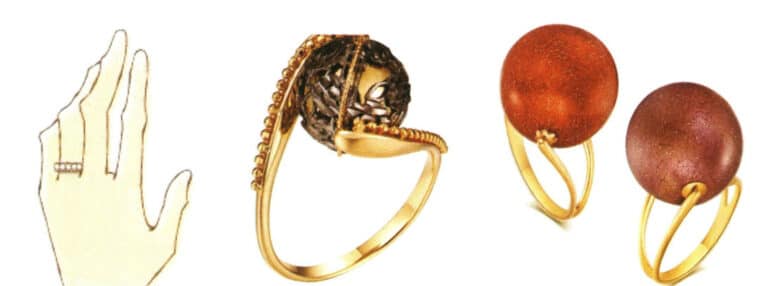


(5) Rings and Selection
When selecting a ring, measure or estimate the finger’s thickness using a ring sizer, then determine the corresponding ring size. When measuring the finger size, use the thickness of the knuckle as the standard; it should not be too tight or loose, ideally comfortable and secure. If it is too tight, wearing it for a long time can affect blood circulation in the finger; if it is too loose, it can easily fall off. It is important to note that finger size can vary with the seasons. Generally, in summer, rings tend to slip off easily due to more sweating, so a slightly tighter ring size is preferable; in winter, when the skin is dry, the ring size should allow the ring to rotate slightly but not fall off.
How to measure finger circumference

Ring Size Conversion Chart
| Tamaño del anillo | 6 | 7 | 8 | 9 | 10 | 11 | 12 | 13 | 14 | ||
|---|---|---|---|---|---|---|---|---|---|---|---|
| Finger circumference/mm | 45 | 46 | 48 | 50 | 51 | 52 | 54 | 55 | 56 | ||
| Tamaño del anillo | 15 | 16 | 17 | 18 | 19 | 20 | 21 | 22 | 23 | ||
| Finger circumference/mm | 57 | 58 | 59 | 60 | 61 | 62 | 63 | 64 | 65 | ||
2. Earrings
(1) Classification of Earrings
- Earrings: Refers to ring-shaped ornaments worn on the earlobes, generally made of precious metals and gemstones.
- Ear drops: Refers to pendants hanging from the earlobes, with the part connecting to the ear being an ear pin or hook. The main part of the ear drop is movable and three-dimensional, offering great design flexibility resulting in countless styles. If only one type of jewelry can be worn, the most suitable choice is dangling earrings, which can draw attention to the face and make the neck appear longer.
- Ear studs: Smaller than earrings, shaped like nails. Ear studs can suit any hairstyle, face shape, or outfit and can be worn on any occasion and in any season.
- Ear threaders: A thin gold thread passes through the ear and hangs down from the back of the ear.
- Hanging Earrings: Designed without ear holes, generally hung directly on the back of the ear.
- Ear Cuffs: Suitable for people without pierced ears, often designed in a clip-on style.
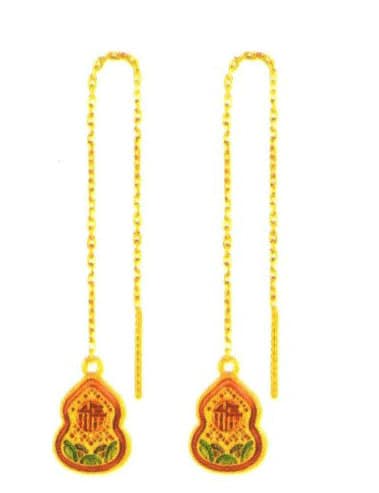
Ear threaders

Ear drops
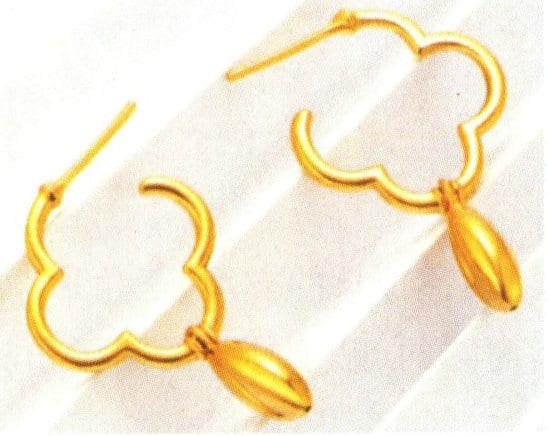
Pendientes
(2) Matching Earrings
① Earrings and Hairstyles
- Short Hair: Earrings studs are more suitable. The studs should not be too small; slightly larger ones can give a lively and capable impression.
- Long Straight Hair: It is best to wear earrings with a dynamic effect, preferably simple hoop styles.
- Long Curly Hair: You can choose earrings that are brightly colored and slightly exaggerated in style.
② Earrings and Face Shape
- Oblong face: It is more suitable to wear earrings with a round effect that fit closely to the earlobe and are slightly larger in shape, such as square fan-shaped studs or large hoop earrings. These earrings can visually increase the width of the face, adjust the overall facial image, and create a better visual effect.
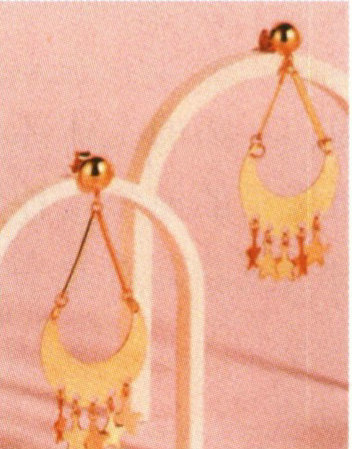
K gold earrings
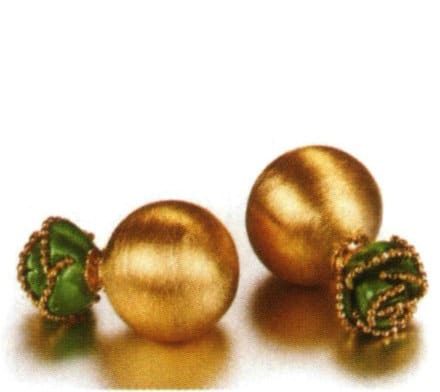
Round stud earrings
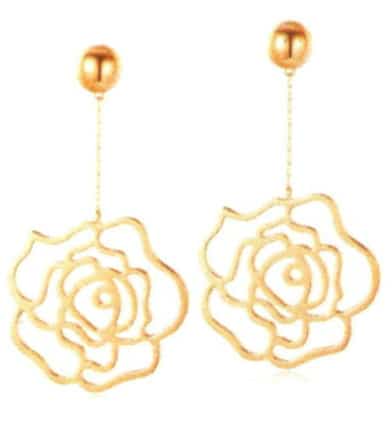
Flower-shaped drop earrings
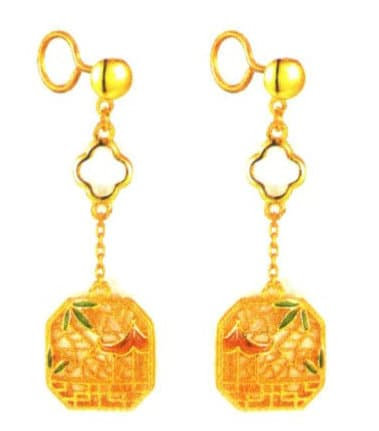
Square drop earrings
- Round face: Various long rectangular, triangular, or teardrop-shaped earrings or pendants can help modify the face shape; it is not advisable to wear large, round, close-fitting circular studs or large dangling hoops, as they can make the face appear fuller.

Linear earrings

Oval linear earrings

Cabochon earrings
- Square face: It is suitable to wear long oval, crescent, or new leaf-shaped earrings; it is not suitable to wear triangular, rectangular earrings or earrings with a large surface area.
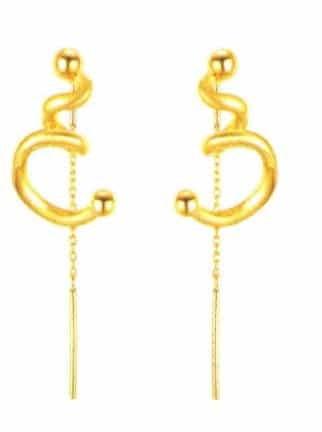
Curved earrings

Teardrop earrings
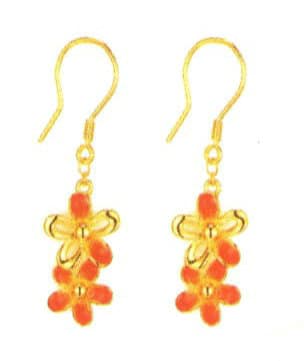
Flower-shaped earrings
- Oval face: Recognized as the perfect face shape, all earrings suit it.
3. Necklaces

(1) Classification of Neck Ornaments
Neck Ornaments: Common neck ornaments include collars, pendants, and necklaces.
The shape of a collar is very similar to a necklace, except that it has almost no movable joints except for the spring clasp, so a collar is also called a stiff necklace. In traditional Chinese customs, collars are often made of precious materials such as gold and silver, and many have longevity locks hanging on them or are inlaid with jade, symbolizing warding off evil, praying for blessings, and ensuring safety. Nowadays, collars mostly refer to necklaces that fit closely around the neck.
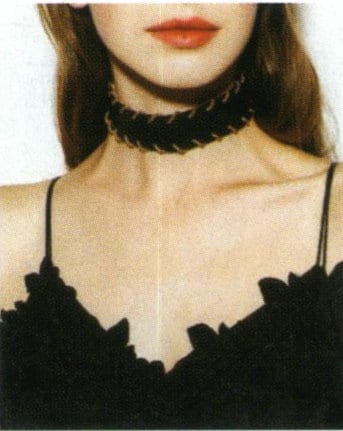
Woven collar

Silver collar
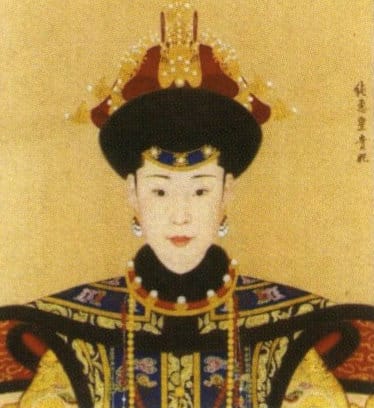
Pure Huigui Imperial Consort wearing a collar
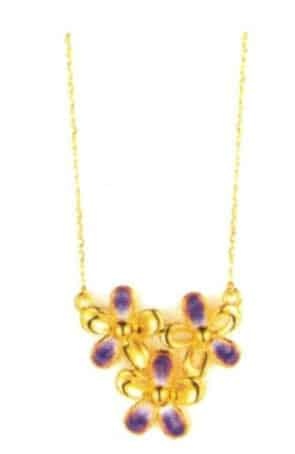
Enamel pendant
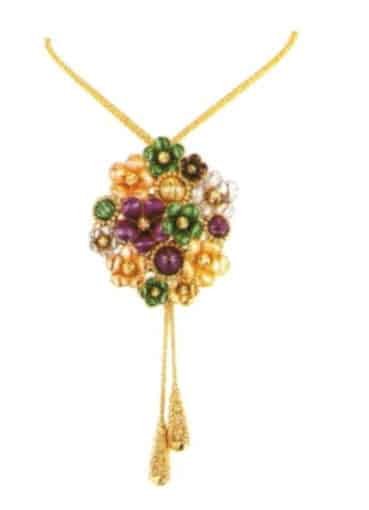
Enamel pendant

Jade pendant
A necklace mainly consists of two parts: the chain and the clasp. There are two types of chains: plain chains and fancy chains. A plain chain comprises links connected one by one, with patterns on the links, and the links are all identical or similar; a fancy chain is inlaid with various gemstones and decorative pieces.
Many types of necklaces can be roughly divided into two main series: metal and gemstone necklaces, with lengths of 40cm, 45cm and 60~80cm. Precious metal plain necklaces and necklaces made from a single gemstone (such as pearls), with a length of 40~45cm, are generally worn directly around the neck.

K gold plain chain
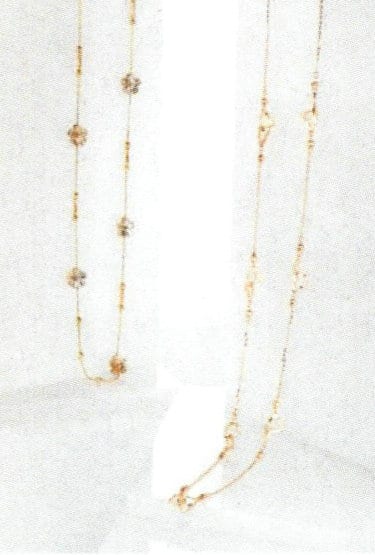
Fancy chain
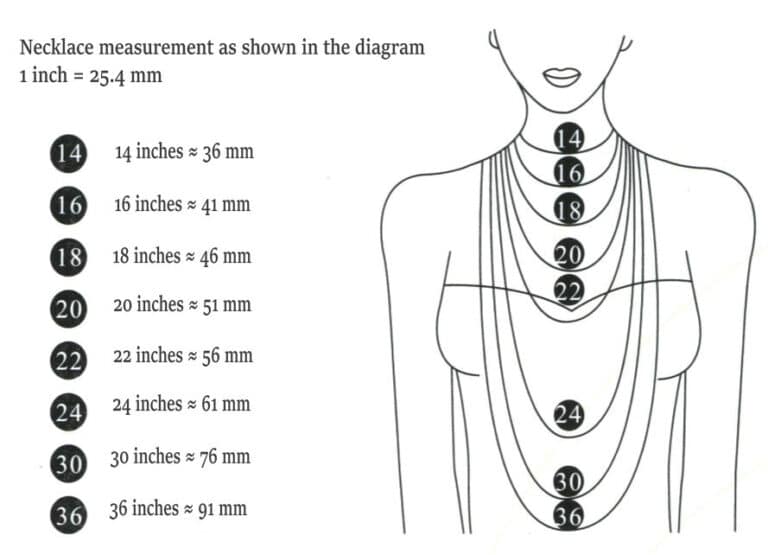
(2) Collar a juego
① Necklaces and the Neck
Women with short and thick necks should choose slender necklaces, “V”-shaped pendants with drops, or necklaces with beads arranged from large to small. These accessories visually create a vertical downward effect, elongating the neckline to achieve visual balance and compensate for body shape shortcomings. Thick and short necklaces will emphasize the shortness and thickness of the neck, making it appear less graceful.


Thick necklace
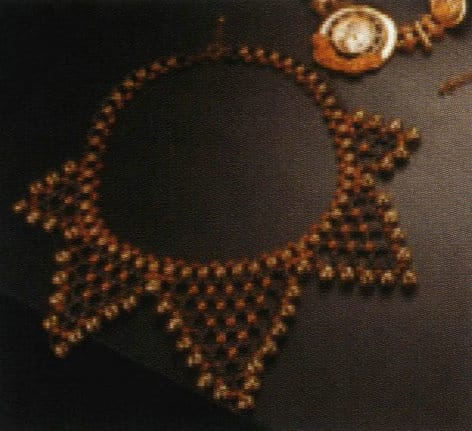
Large necklace
② Necklaces and Face Shape
To achieve the visual effect of lengthening the face and reducing its width, people with round faces should choose pendants such as teardrop shapes, using the necklace’s naturally hanging “V” shape to elongate the facial lines. People with round faces should avoid wearing thick necklaces and chokers made of round beads.
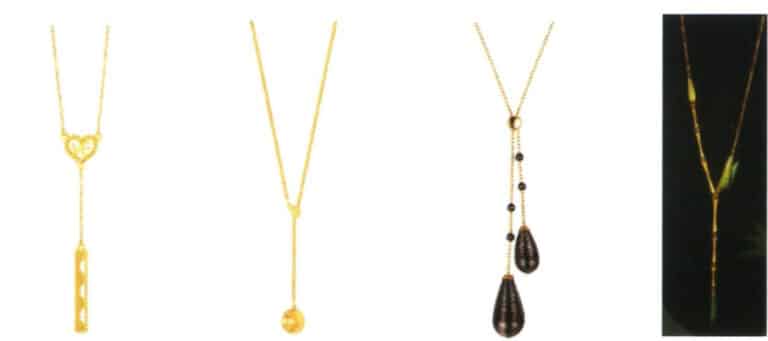



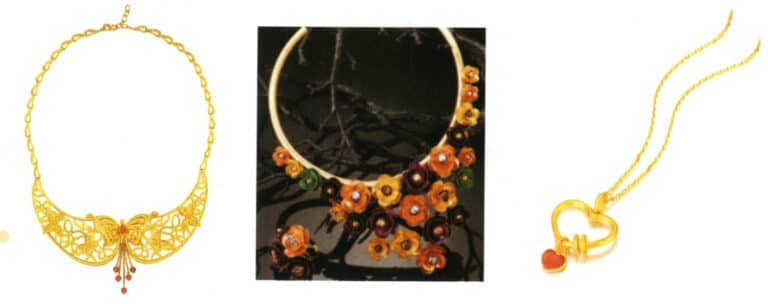
4. Bracelets
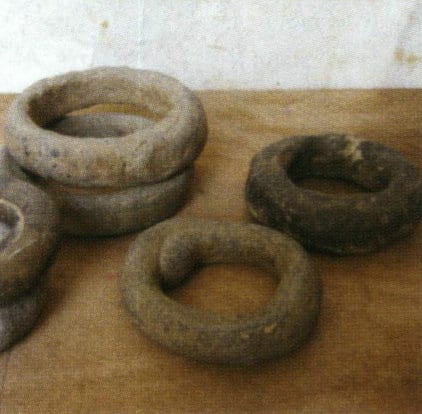
Stone bracelets
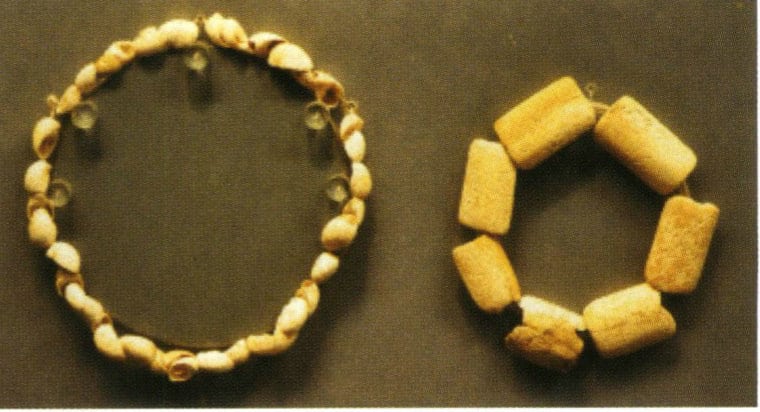
Shell and bone tube bracelets
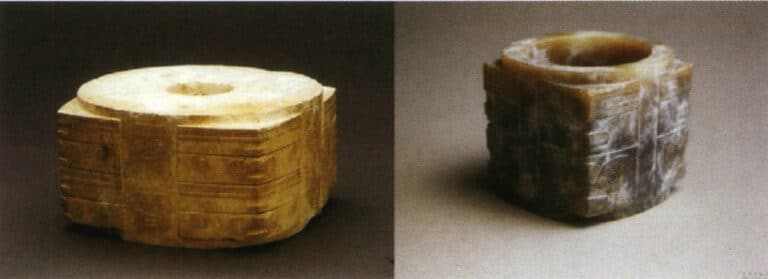
(1) Types of Bracelets
Bracelets can be divided into three categories based on materials and craftsmanship: metal bracelets, inlaid bracelets, and jade bracelets.
Metal bracelets: The main materials are gold, silver, and their alloys. The metal is first pressed into thin strips, then carved or embossed with patterns, and finally bent into a bracelet shape. The process is relatively simple, and the bracelets are beautiful and have some value retention.
Inlaid bracelets: Made with gold or silver as the base, inlaid with gemstones, organic gems, etc., and crafted into a closed-loop style.
Jade bracelets: Common types include Hetian jade, jadeite, xiuyu, and agate. Depending on the shape of the inner circle, they can be divided into flat bracelets, round bracelets, and concubine-style bracelets. The round bracelet is more traditional, while the concubine-style bracelet is flat and round. Different bracelets can be chosen according to personal preference.

Gold round bangle

Gold open bangle
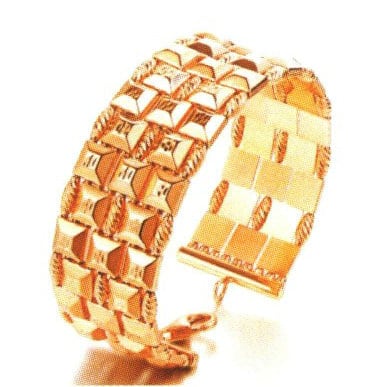
K gold open bangle
(2) Wearing Bracelets
Wearing bracelets generally does not have any special requirements for the wrist and arm. There is no strict limit on the number of bracelets worn; you can wear one or multiple. Wearing only one should be worn on the left hand; if wearing two, you can wear one on each hand or both on the left hand; if wearing three, all should be worn on the left hand.
There are two methods for measuring the inner diameter size of a bracelet.
Method One: Measure the width at the base of the thumb and refer to the “Bracelet Size Comparison Chart” to find the corresponding bracelet size.
Method Two: Clench the palm tightly and measure the circumference of the widest part of the palm, usually using a soft tape measure, then refer to the “Bracelet Size Reference Chart” to find the corresponding bracelet size.

Use a ruler (soft tape) to measure the width of the palm (excluding the thumb)

Fold the thumb into the palm, wrap the soft tape around the widest part of the hand, the measured result is the smallest circumference of the palm
Bangle Inner Diameter Measurement Method
| Widest part of the palm/mm | Round bracelet size/ mm | Concubine-style bracelets/mm | Smallest circumference of the palm/cm |
|---|---|---|---|
| 62 〜 66 | Inner diameter 50〜52 | Inner diameter 51〜54 | Circumference 16〜17 |
| 66 〜 70 | Inner diameter 52〜54 | Inner diameter 53〜56 | Circumference 17〜18 |
| 70 〜 74 | Inner diameter 54〜56 | Inner diameter 55〜58 | Circumference 18〜19 |
| 74 〜 78 | Inner diameter 56〜58 | Inner diameter 57〜60 | Circumference 19〜20 |
| 78 〜 82 | Inner diameter 58〜60 | Inner diameter 59〜62 | Circumference 20〜21 |
| Above 82 | Inner diameter: above 60 | Inner diameter: above 62 | Circumference: above 21 |





